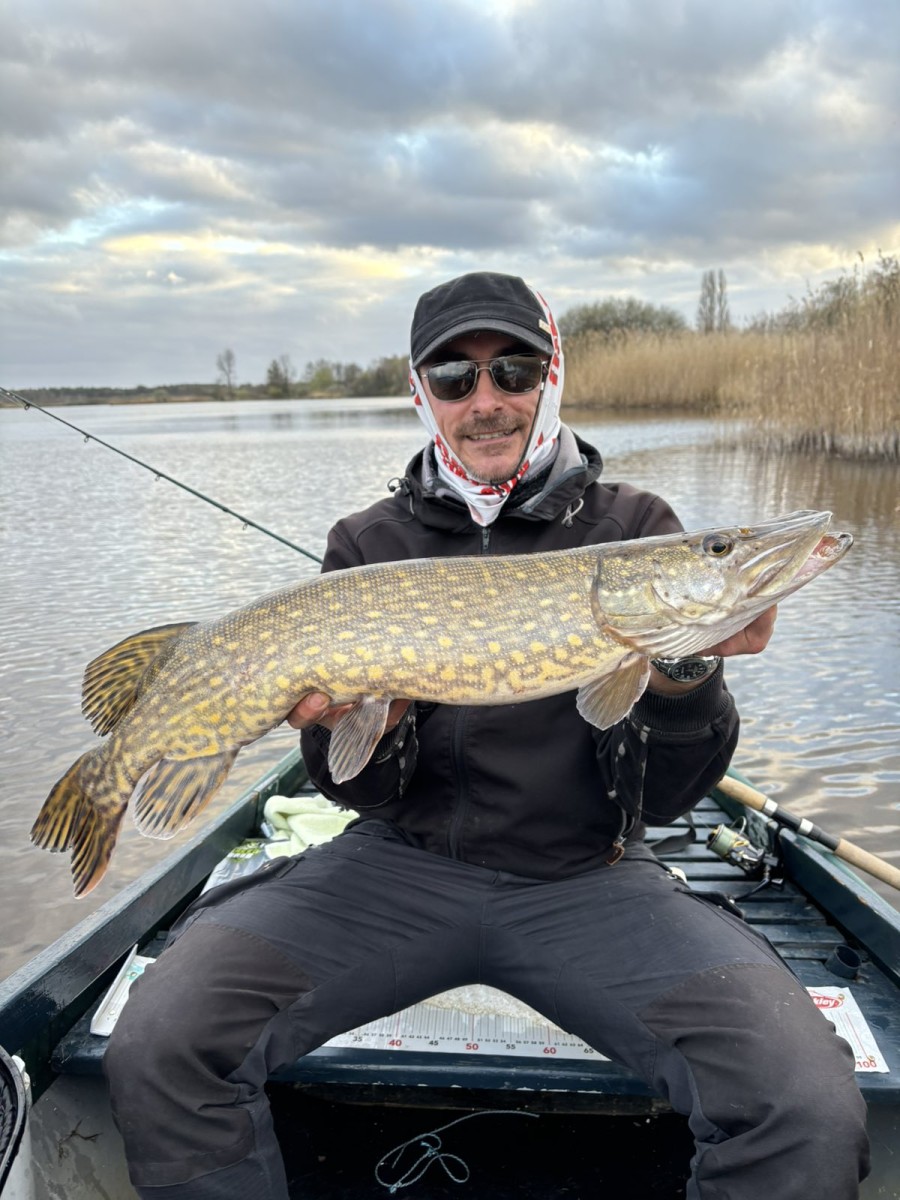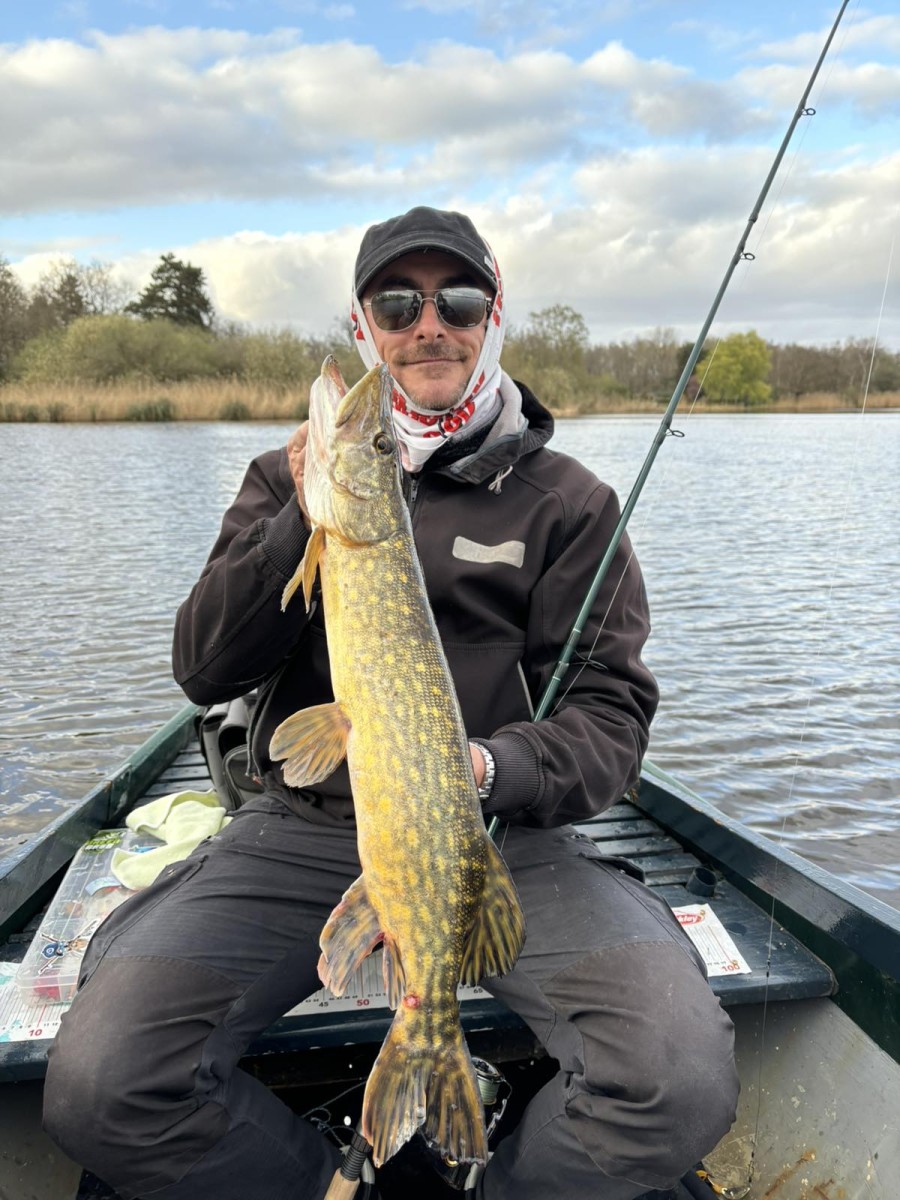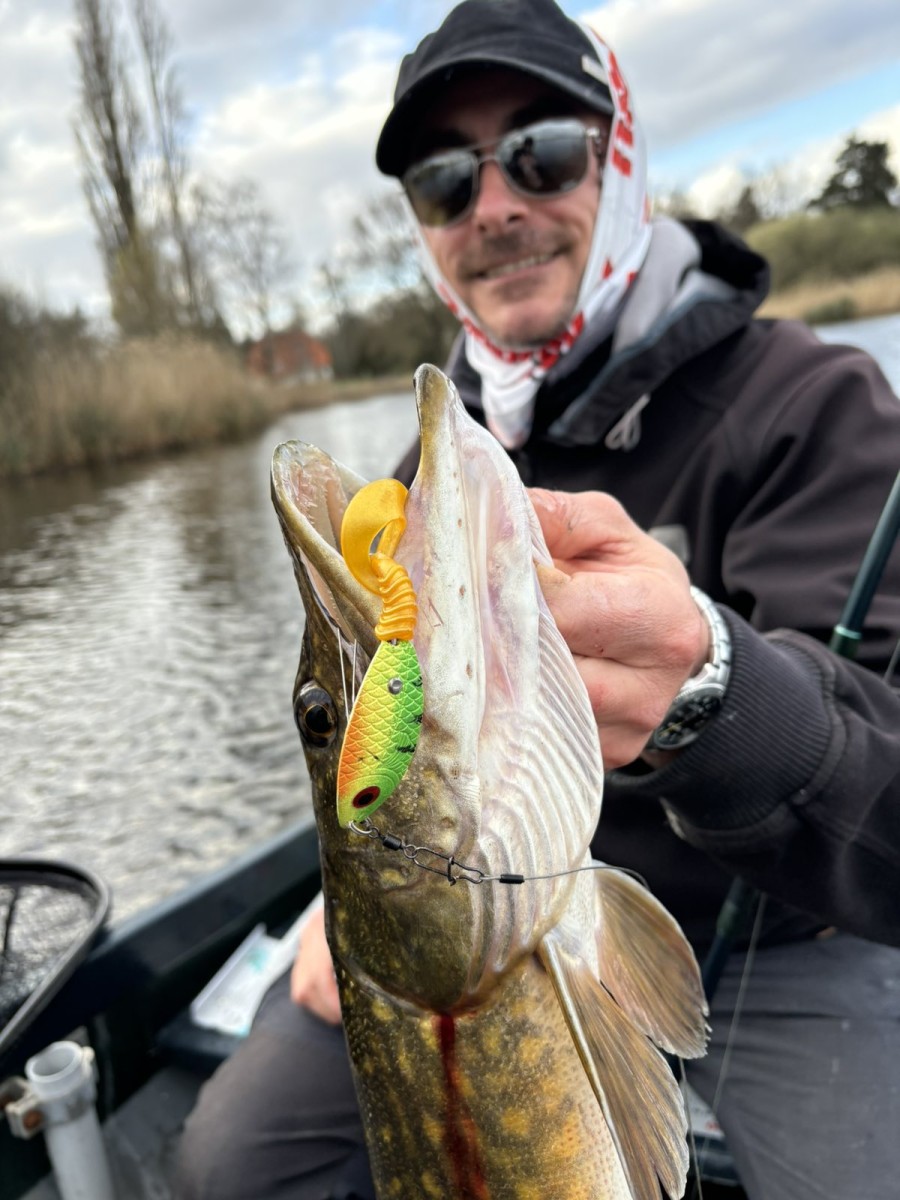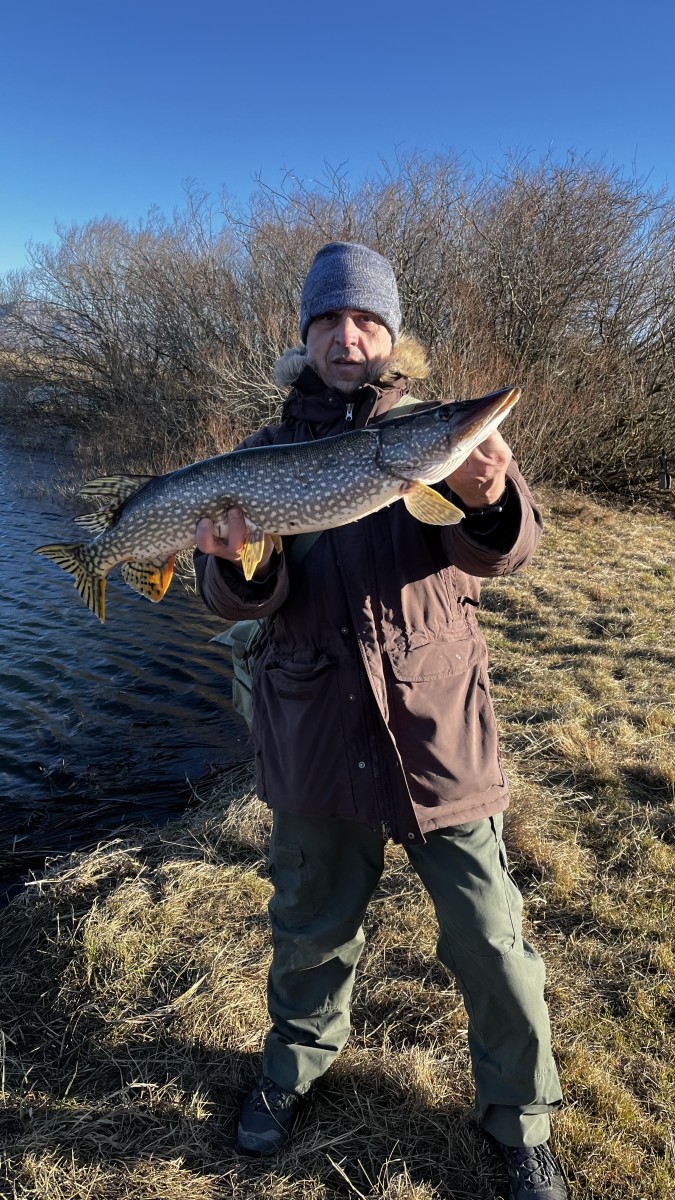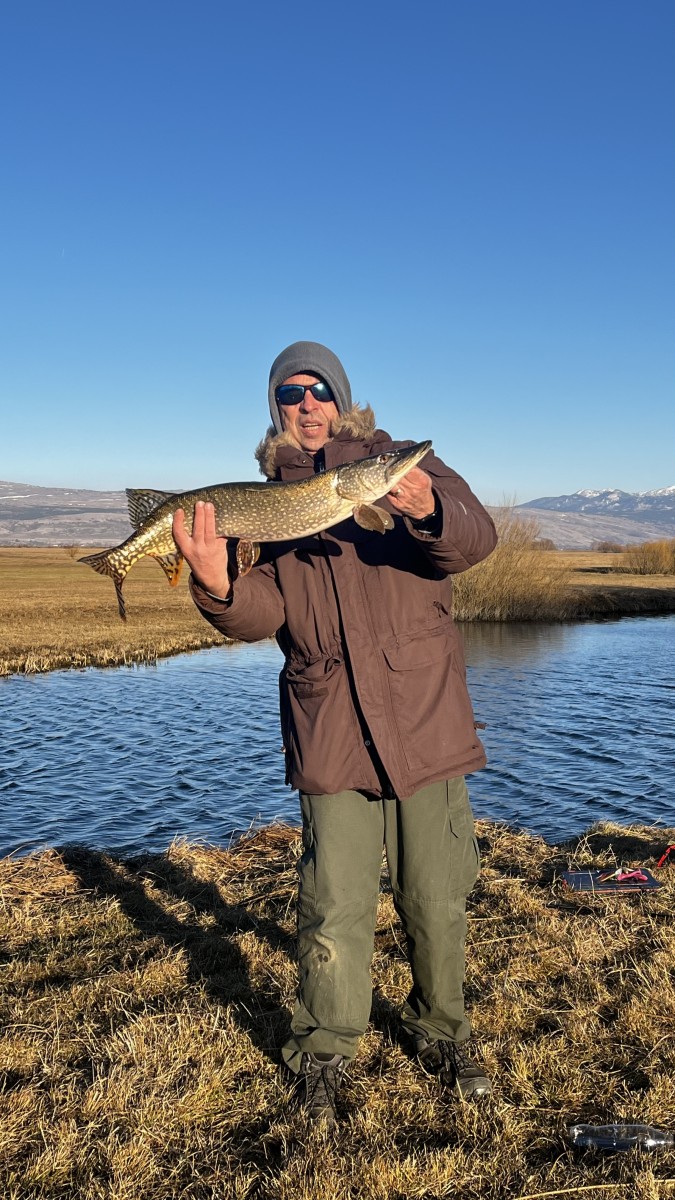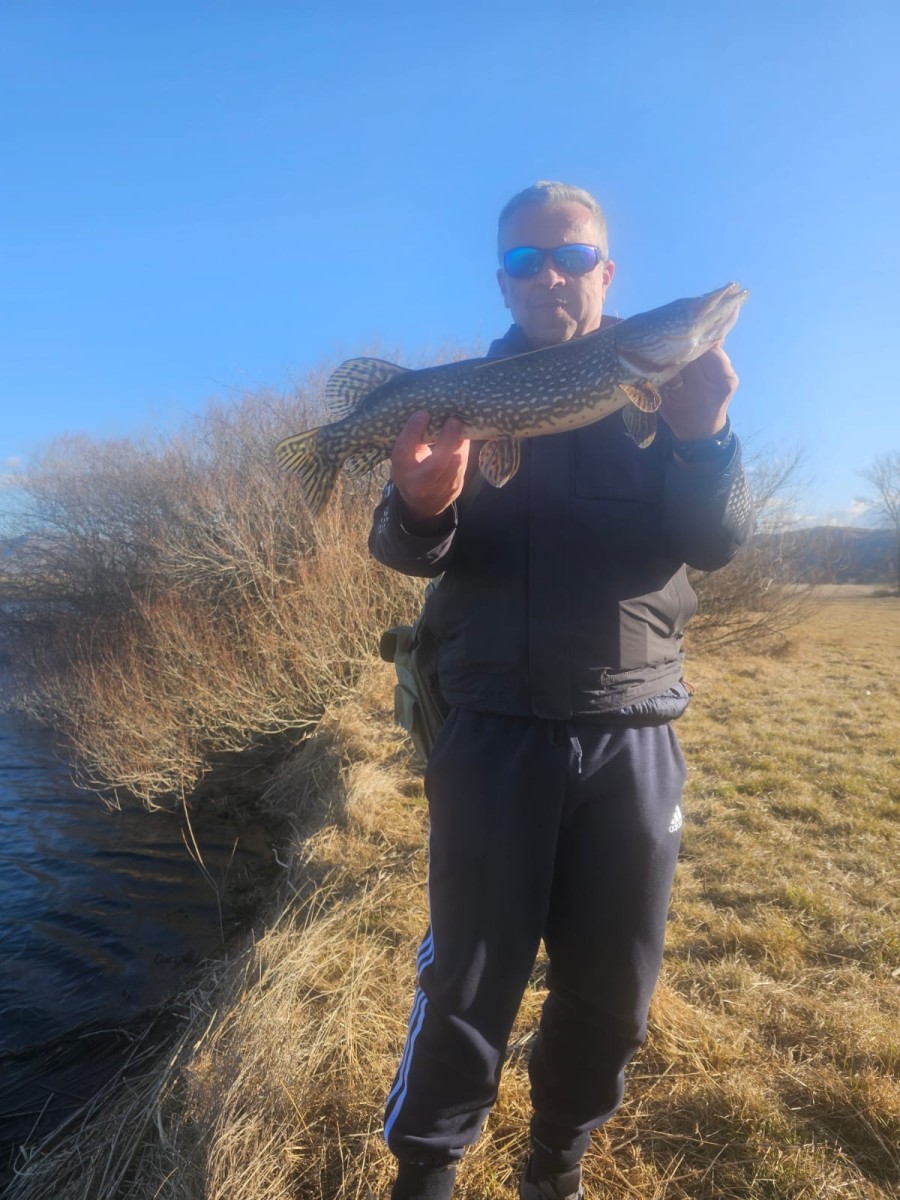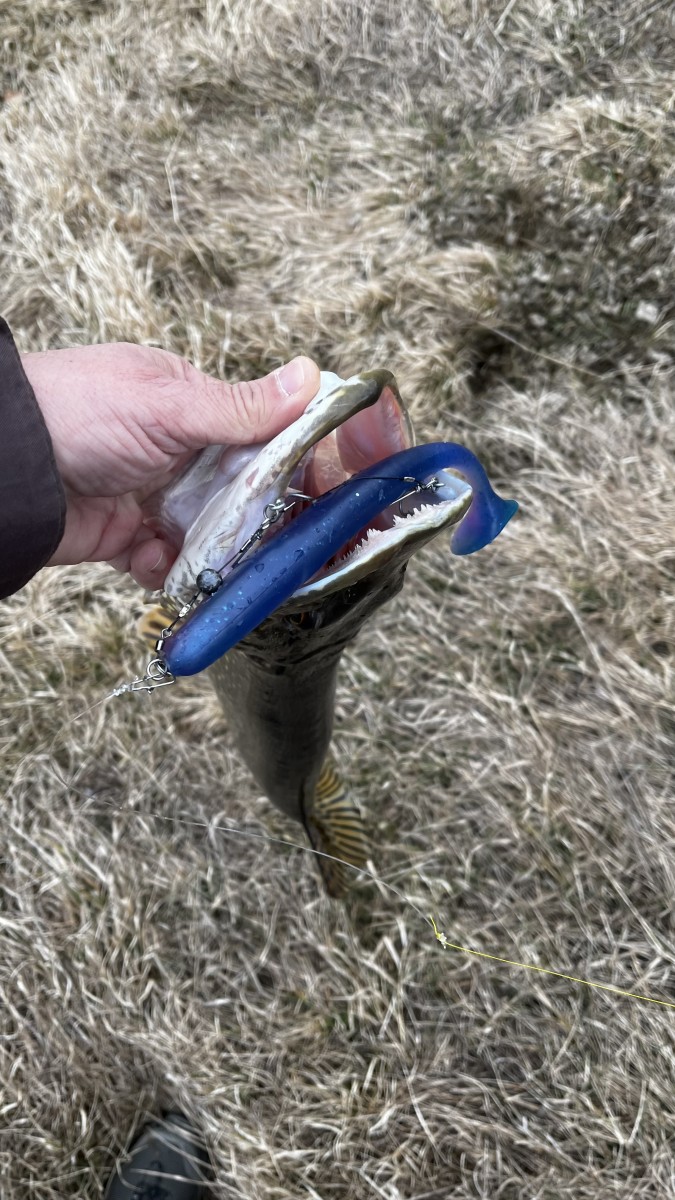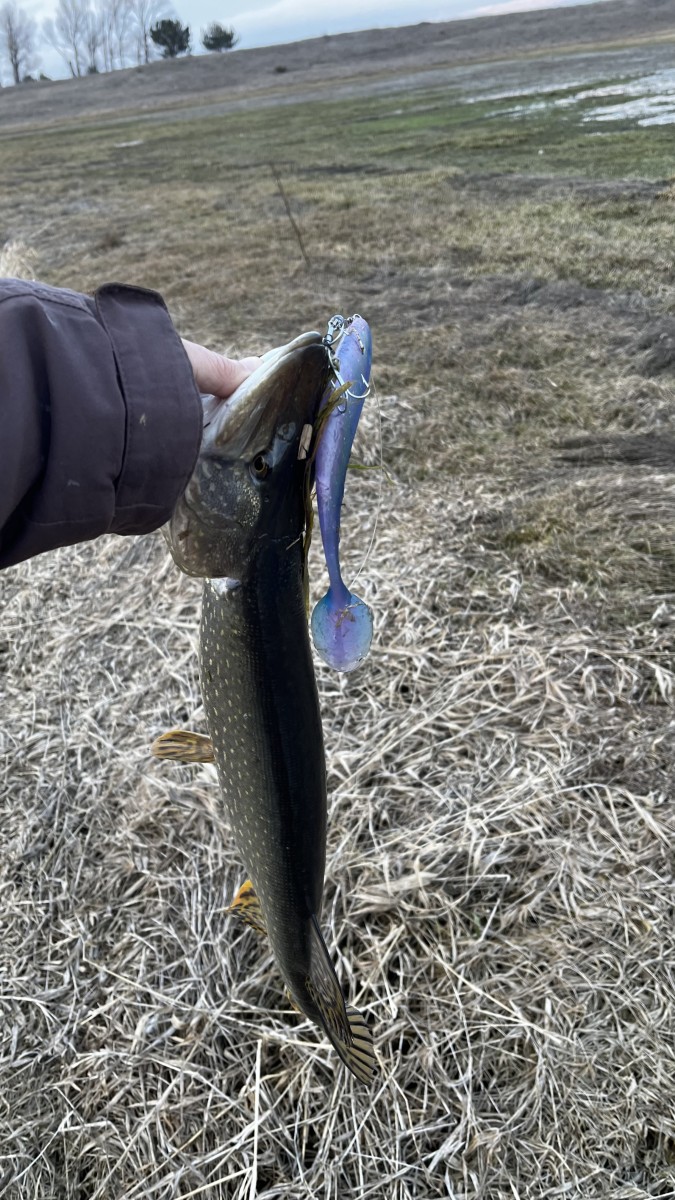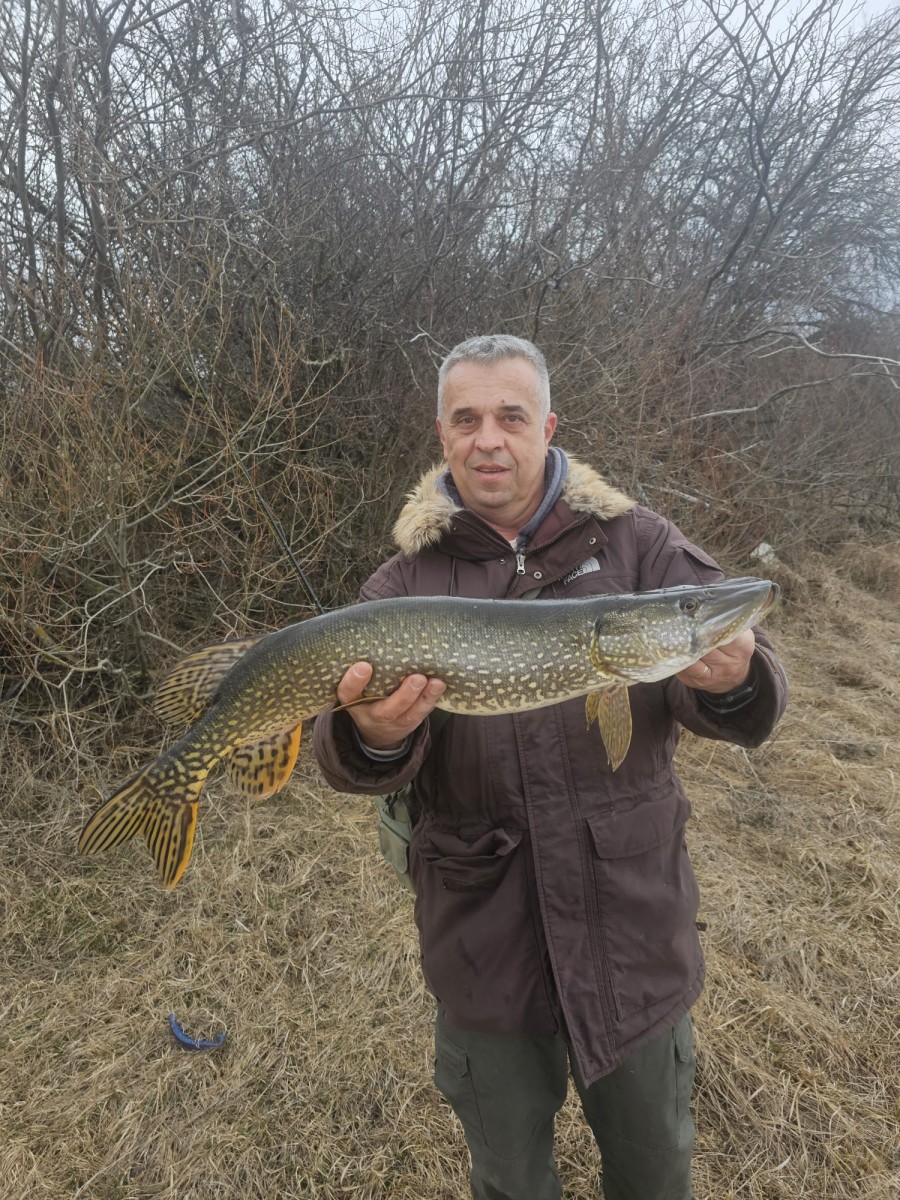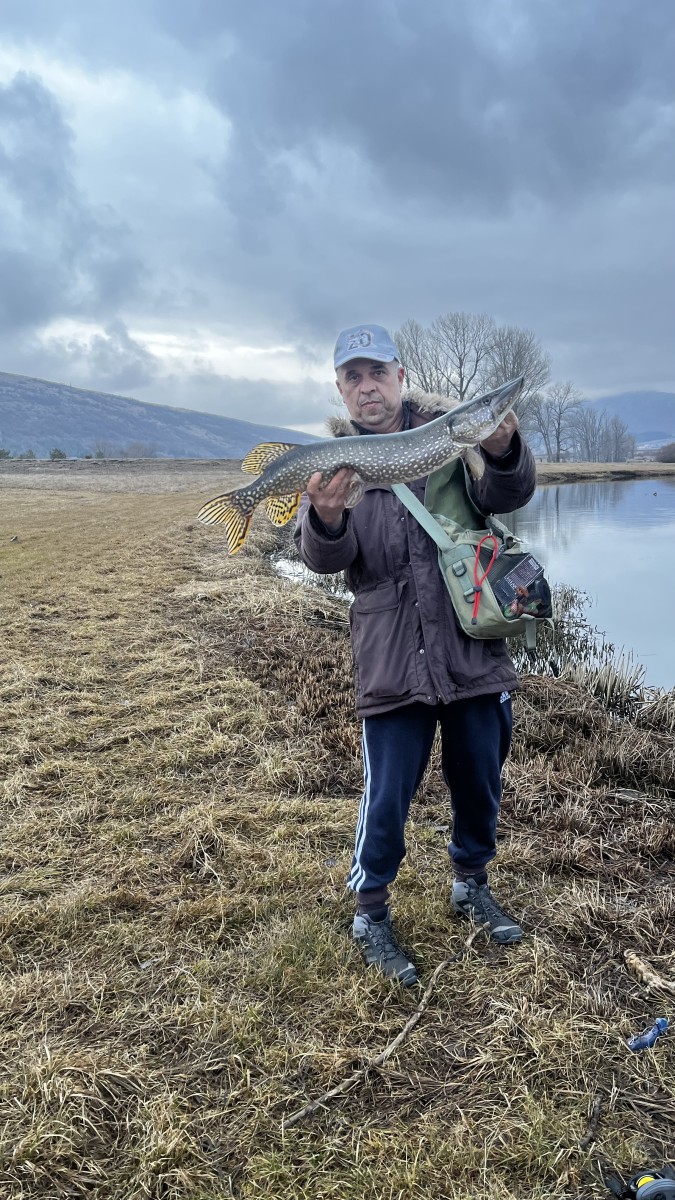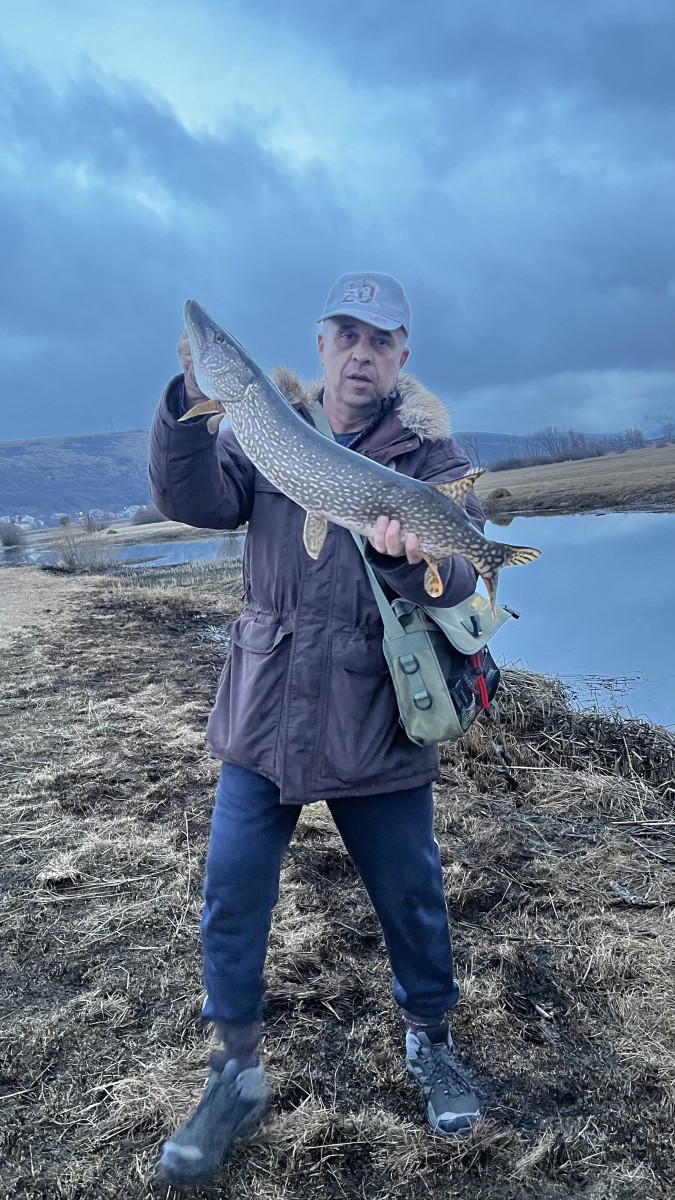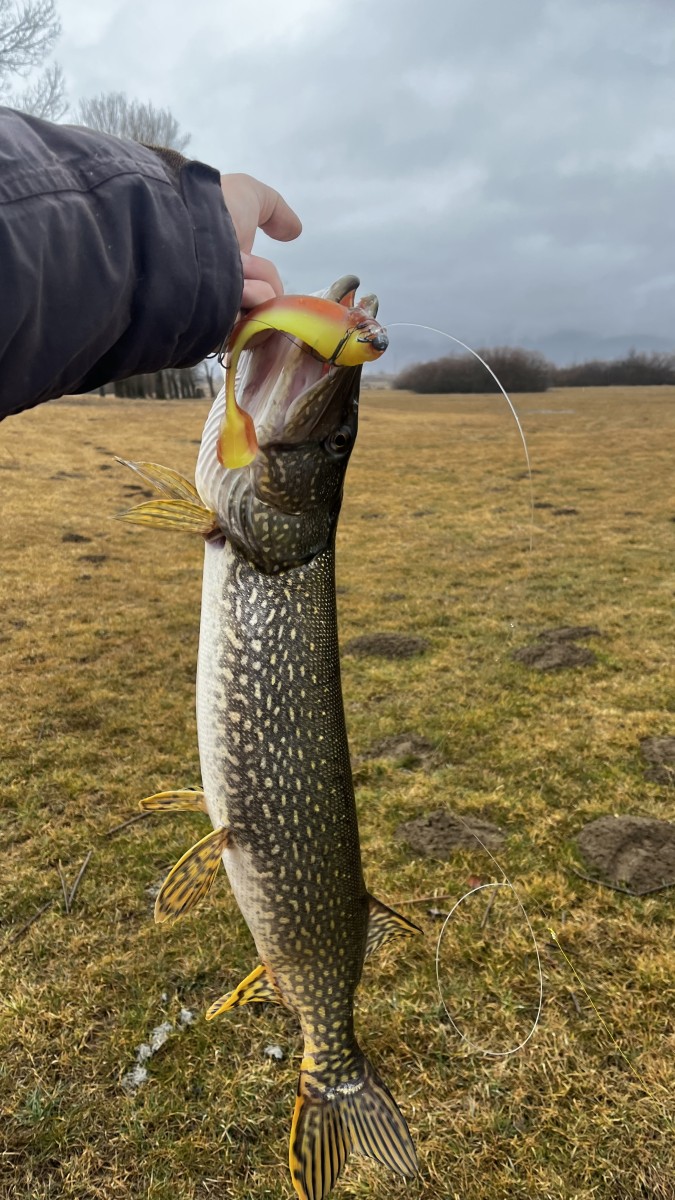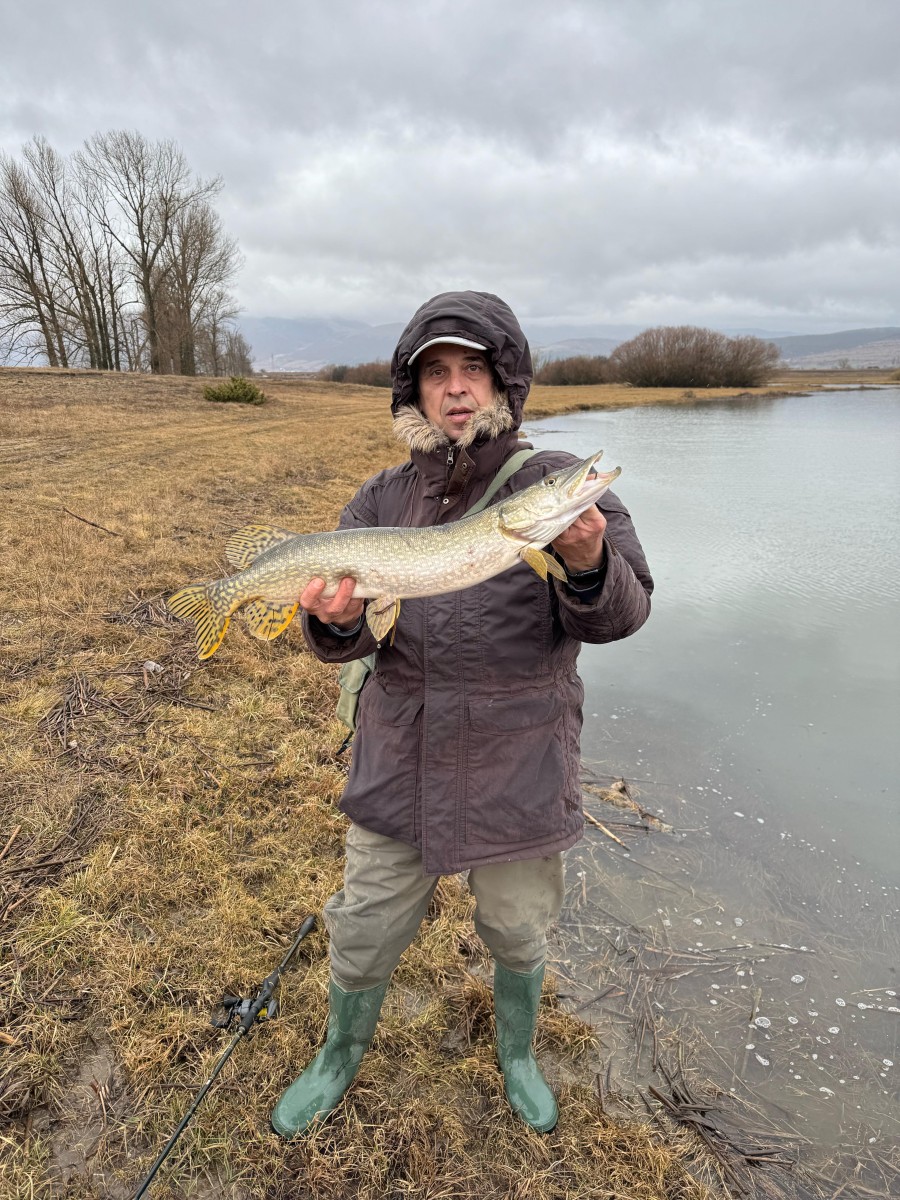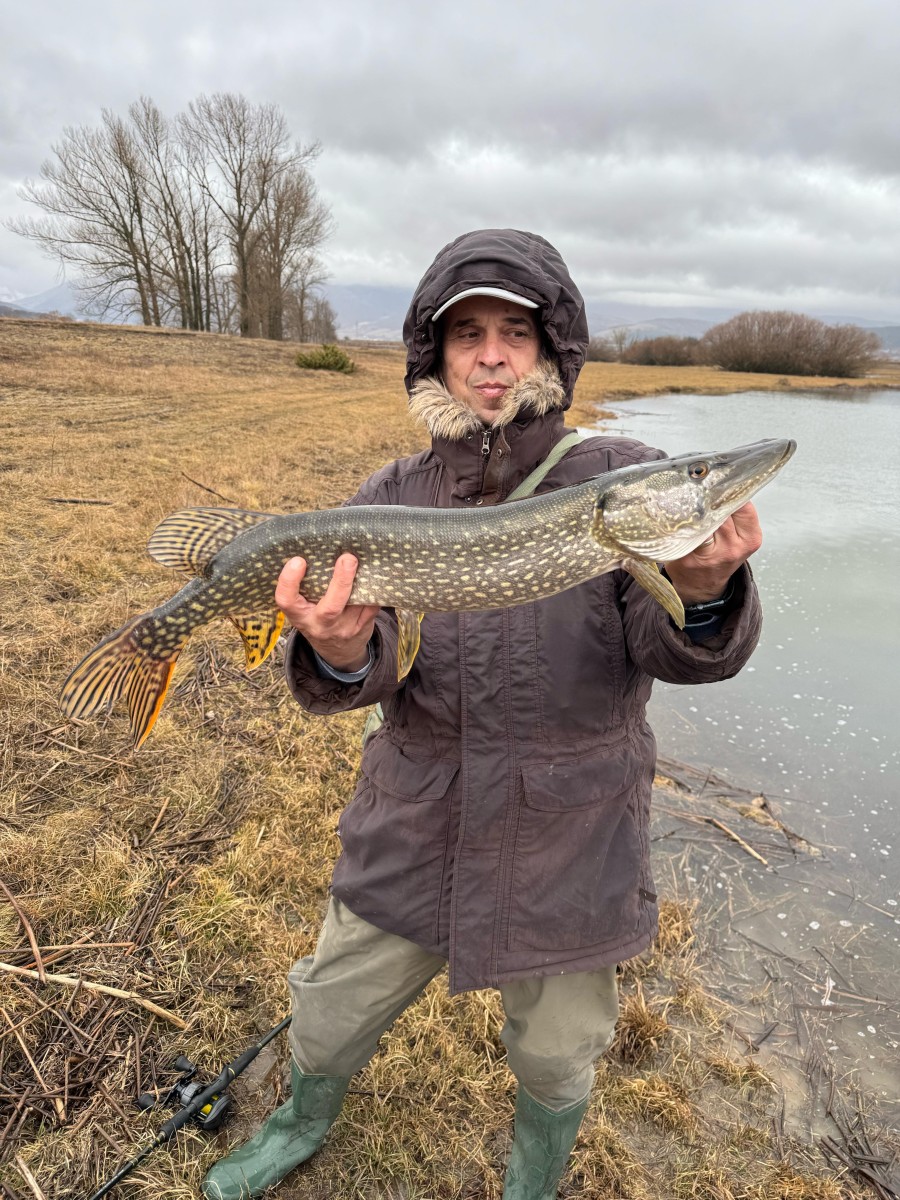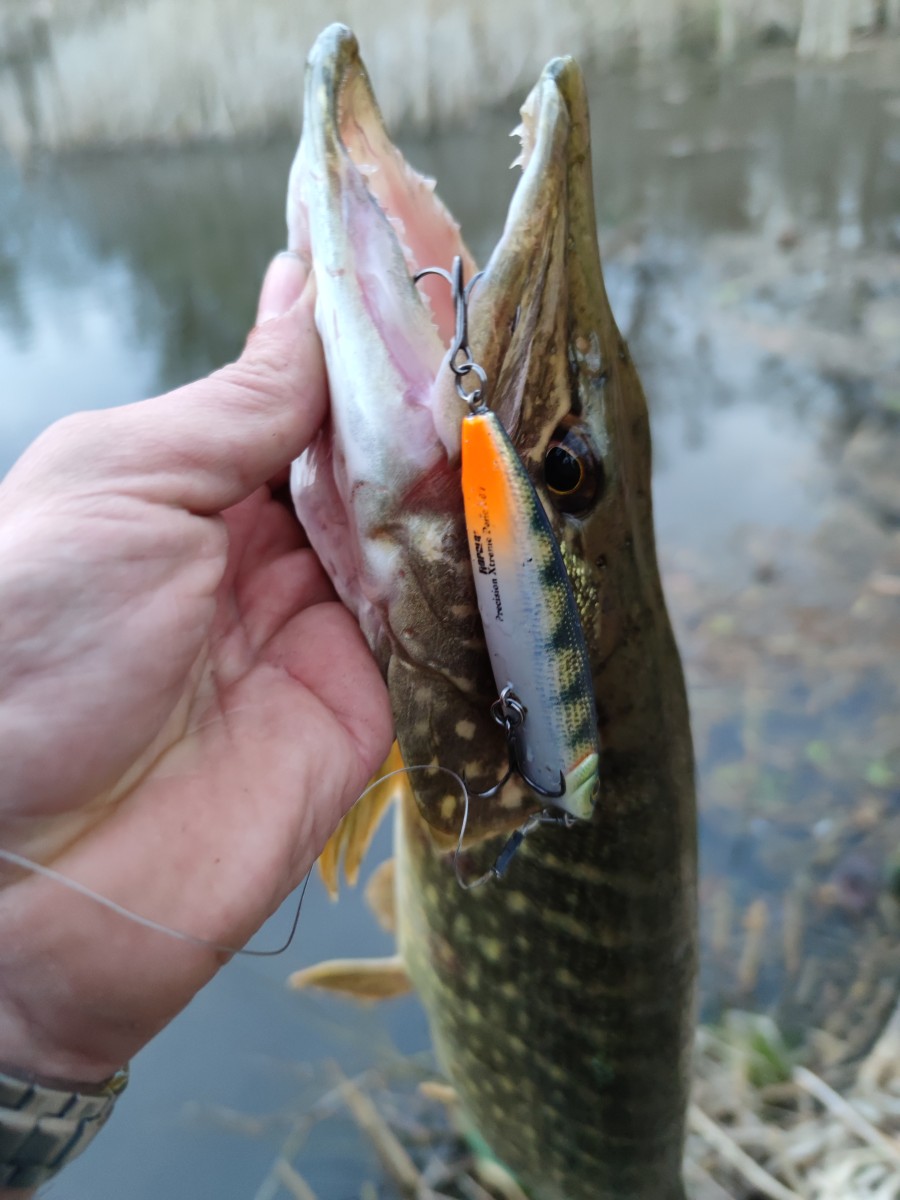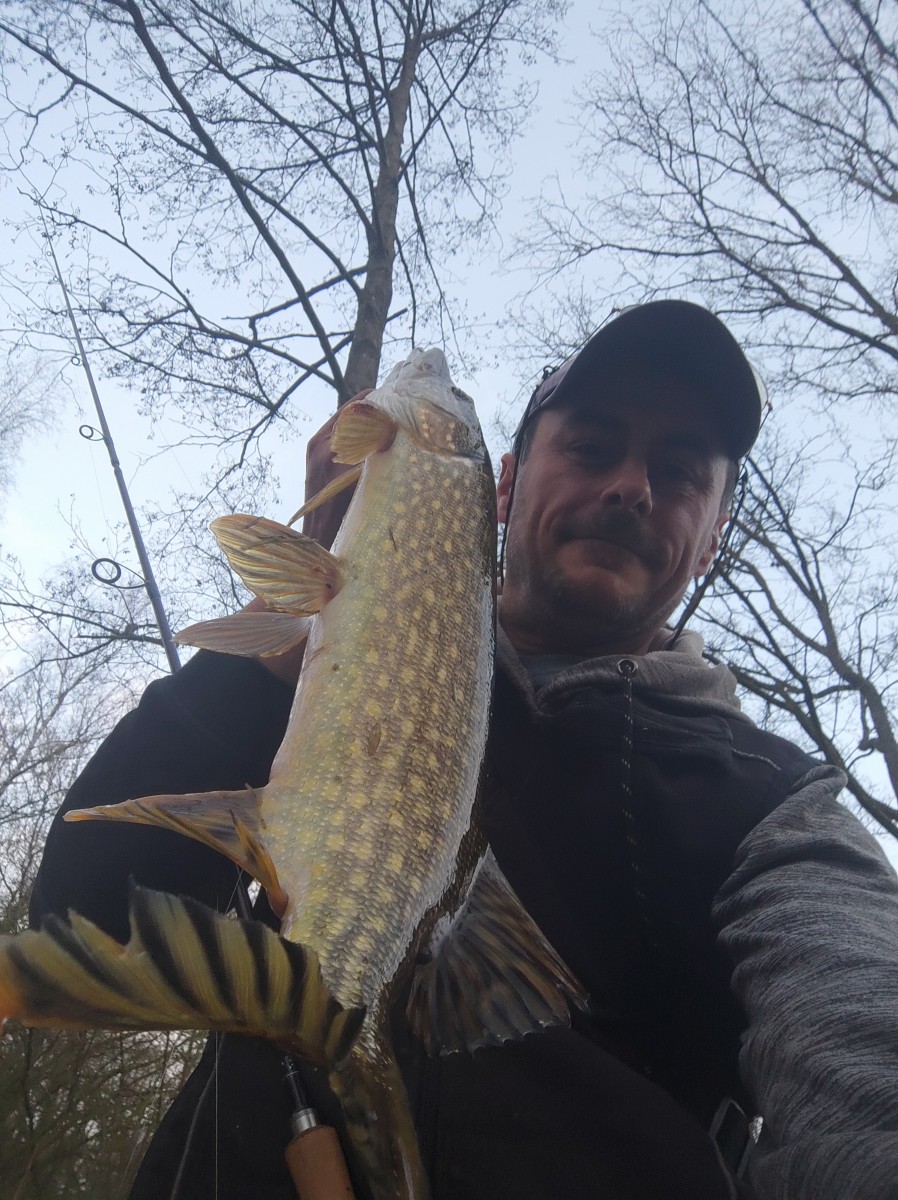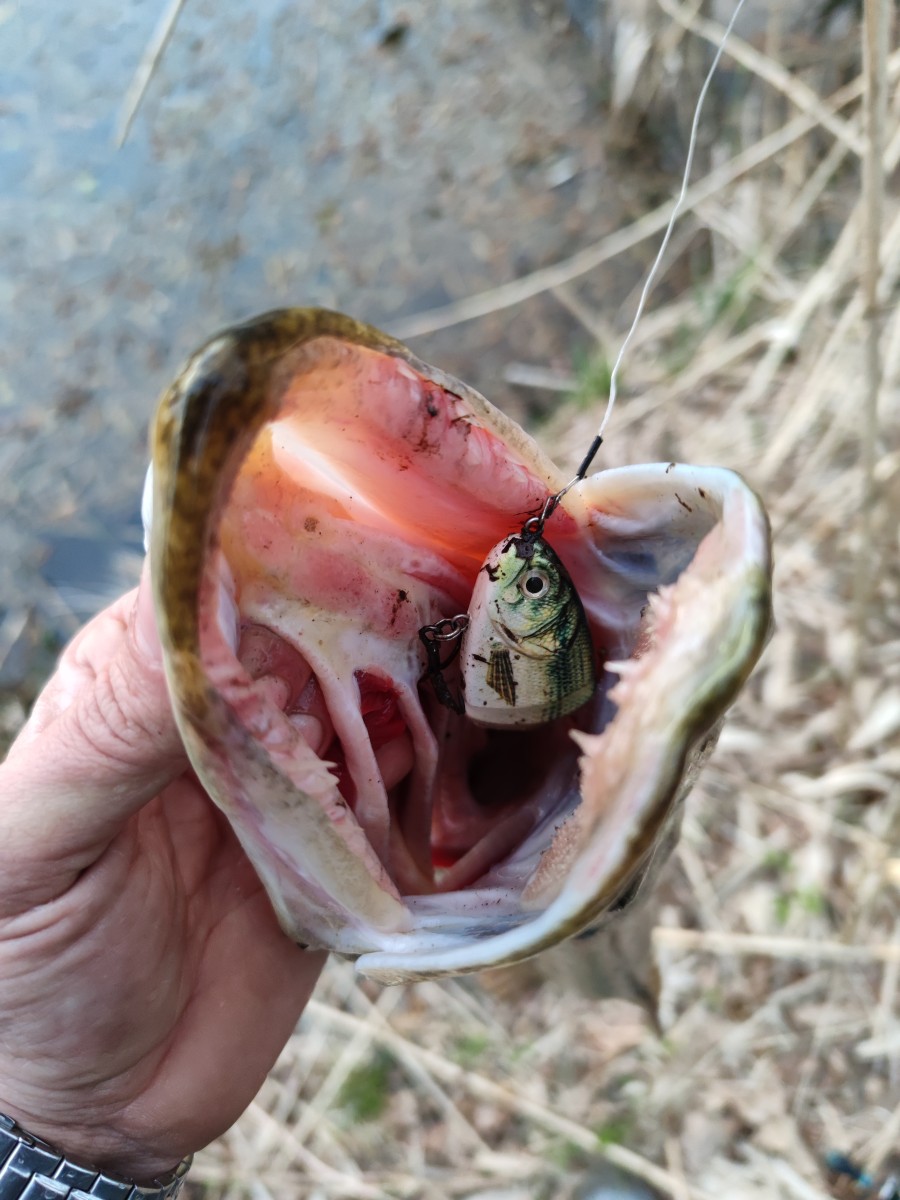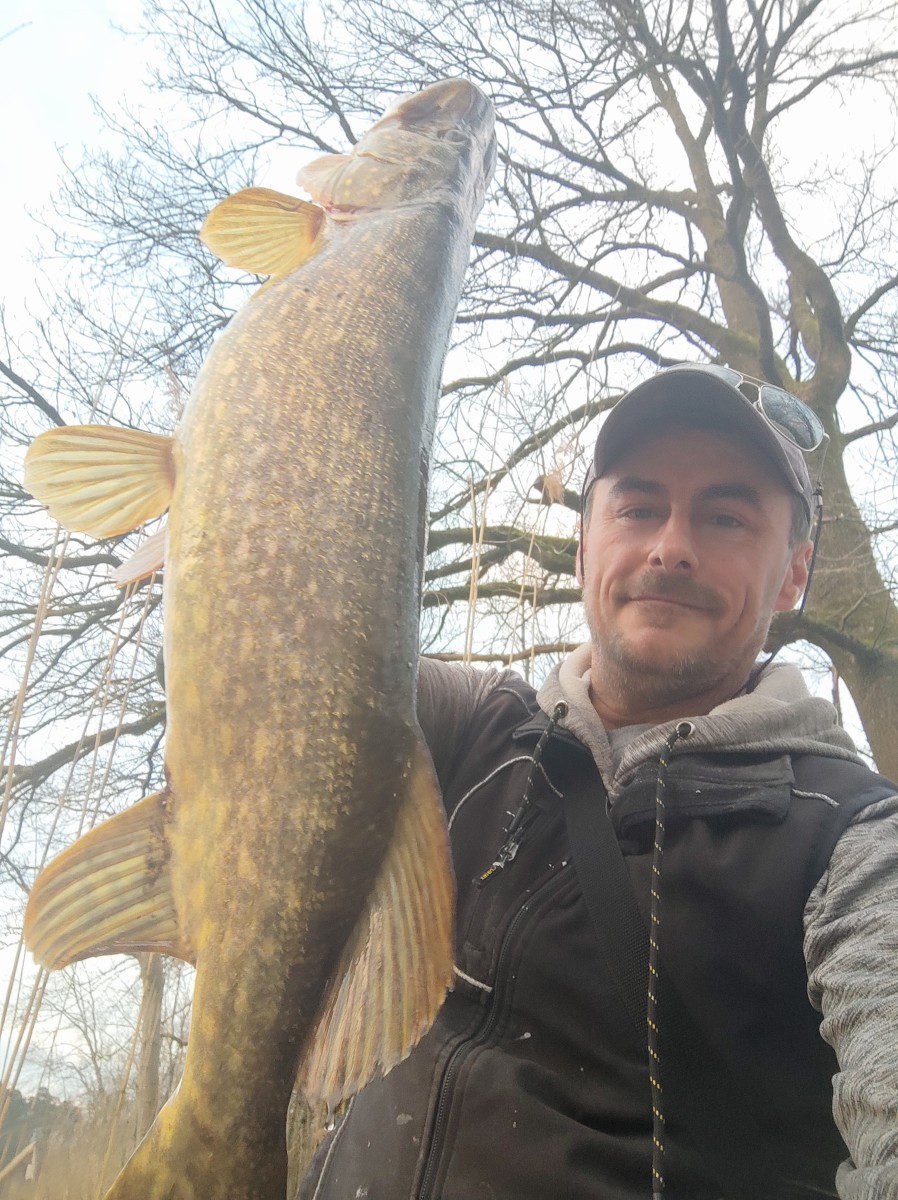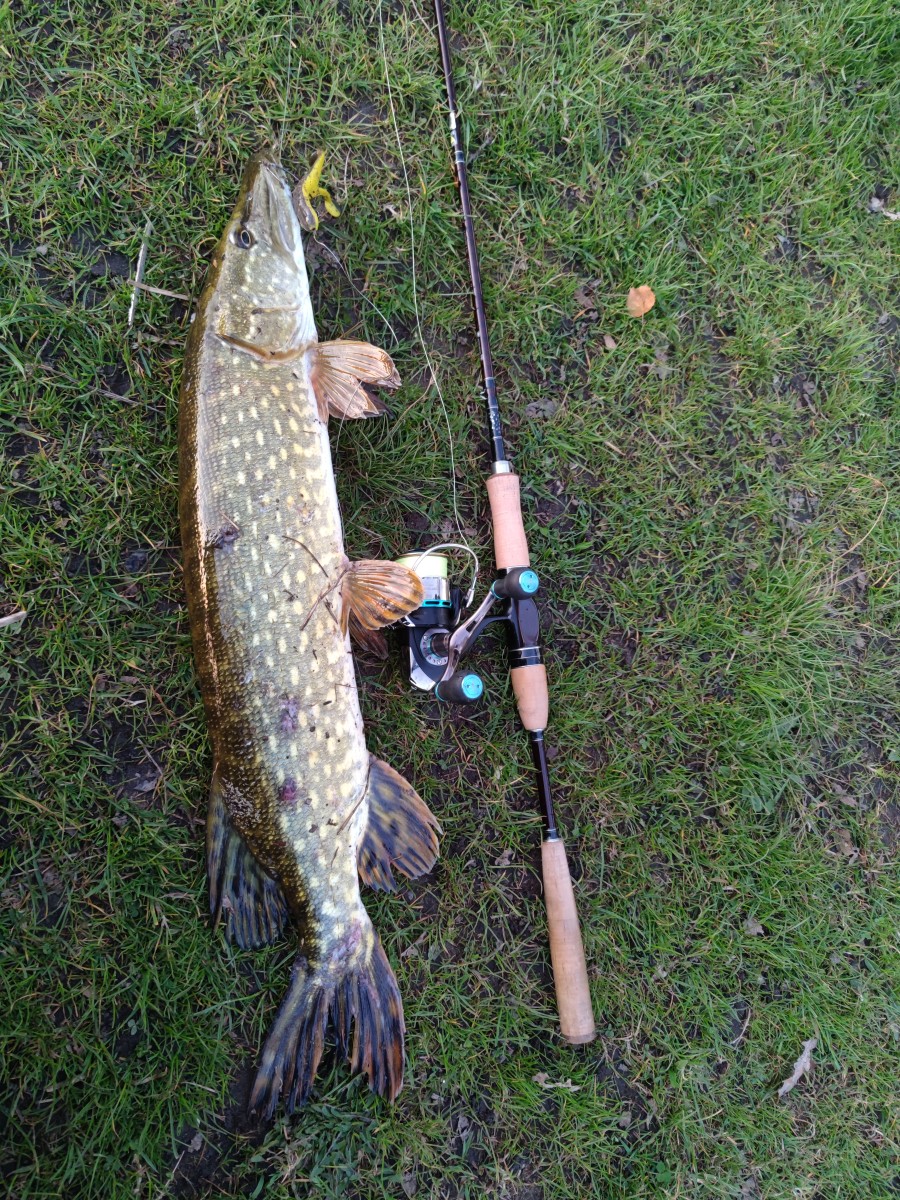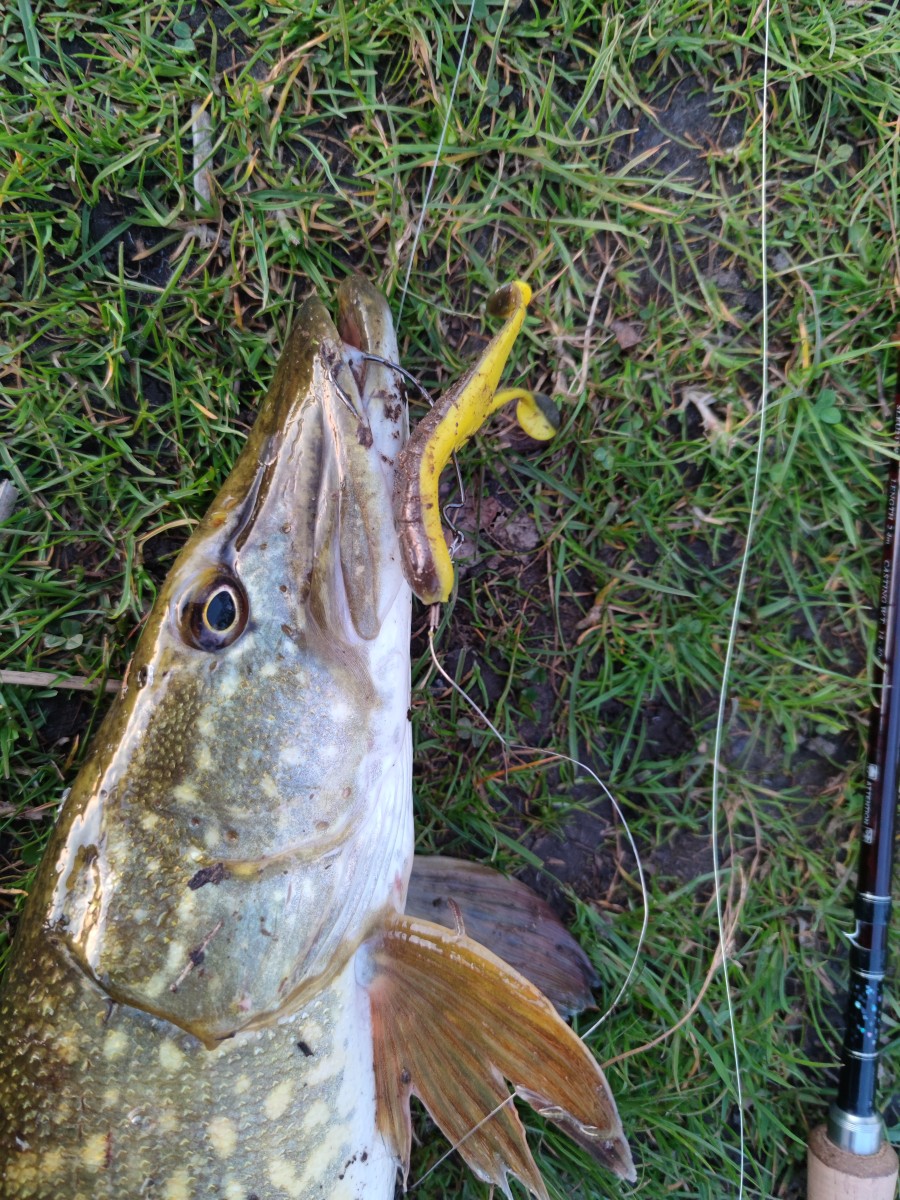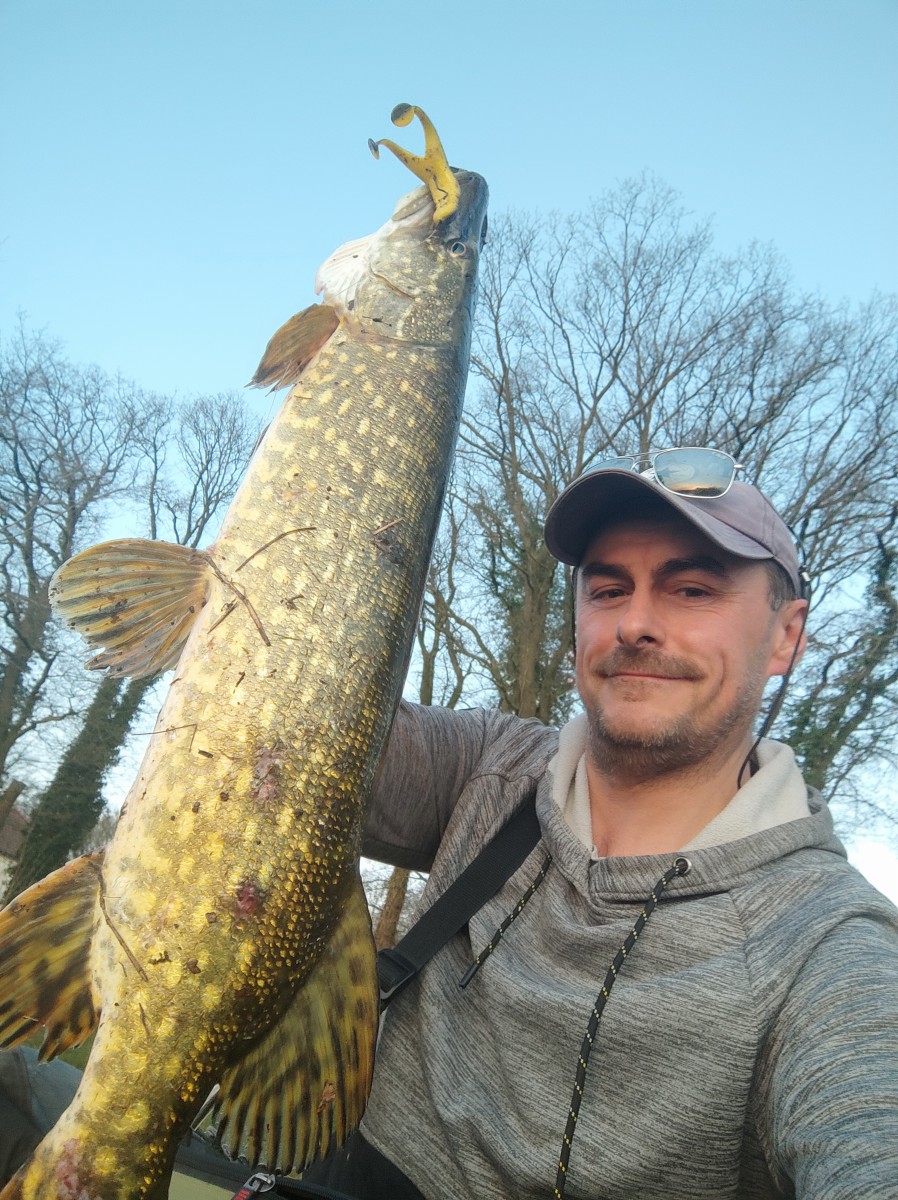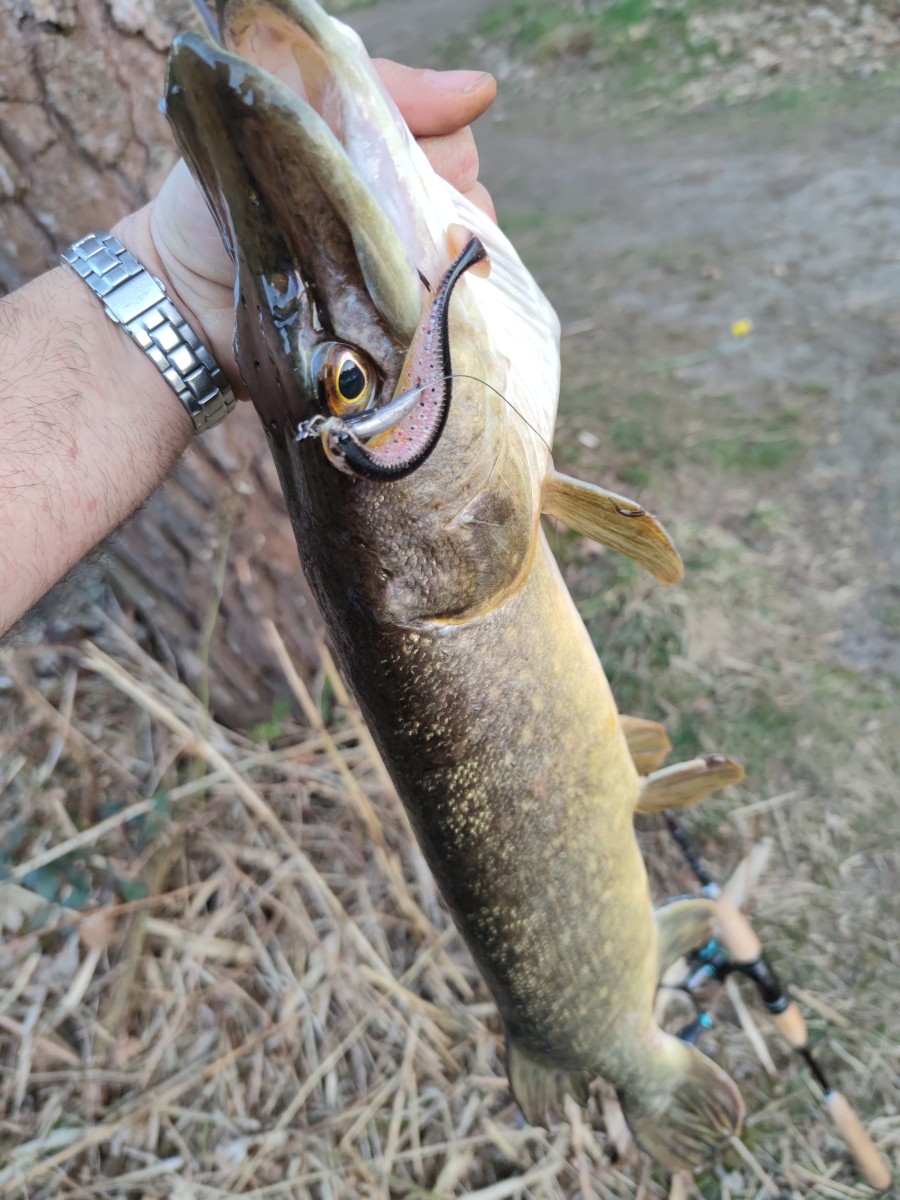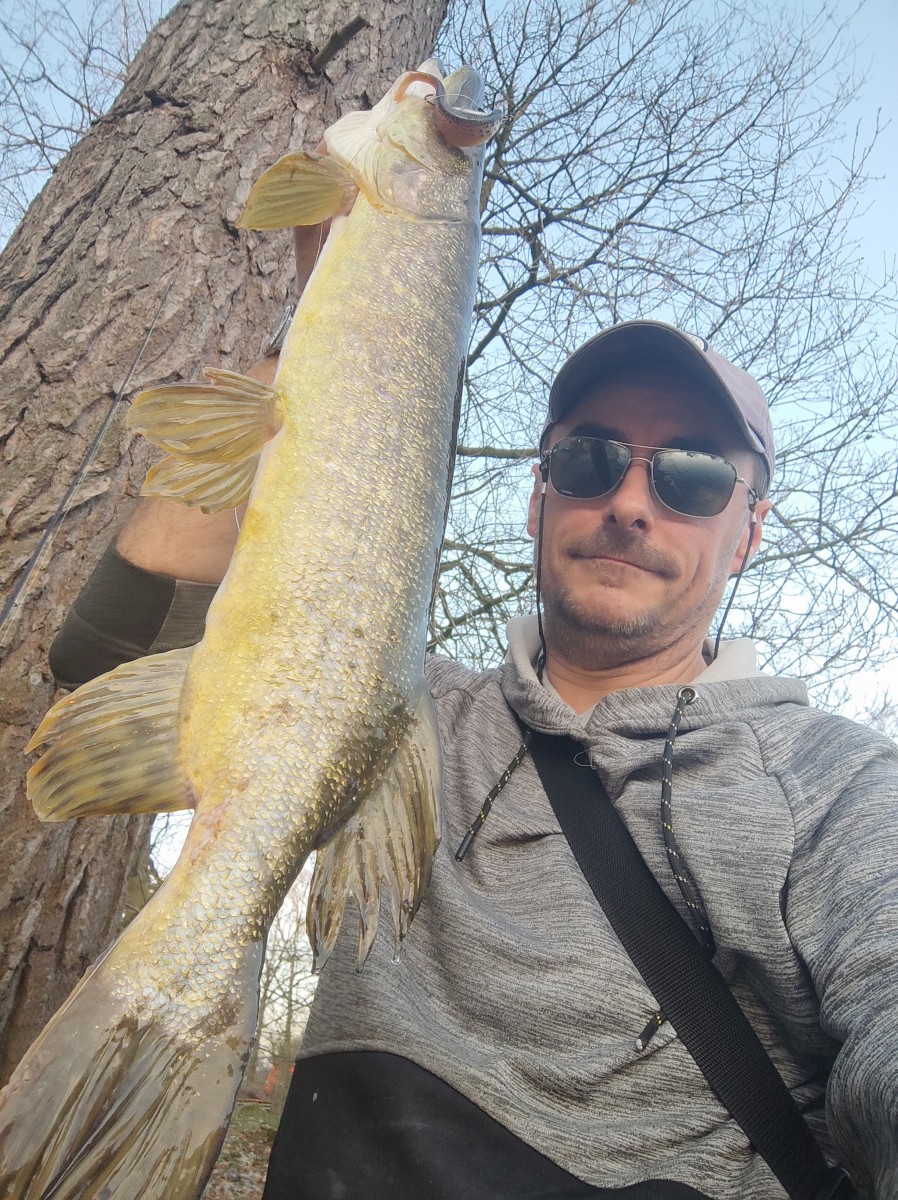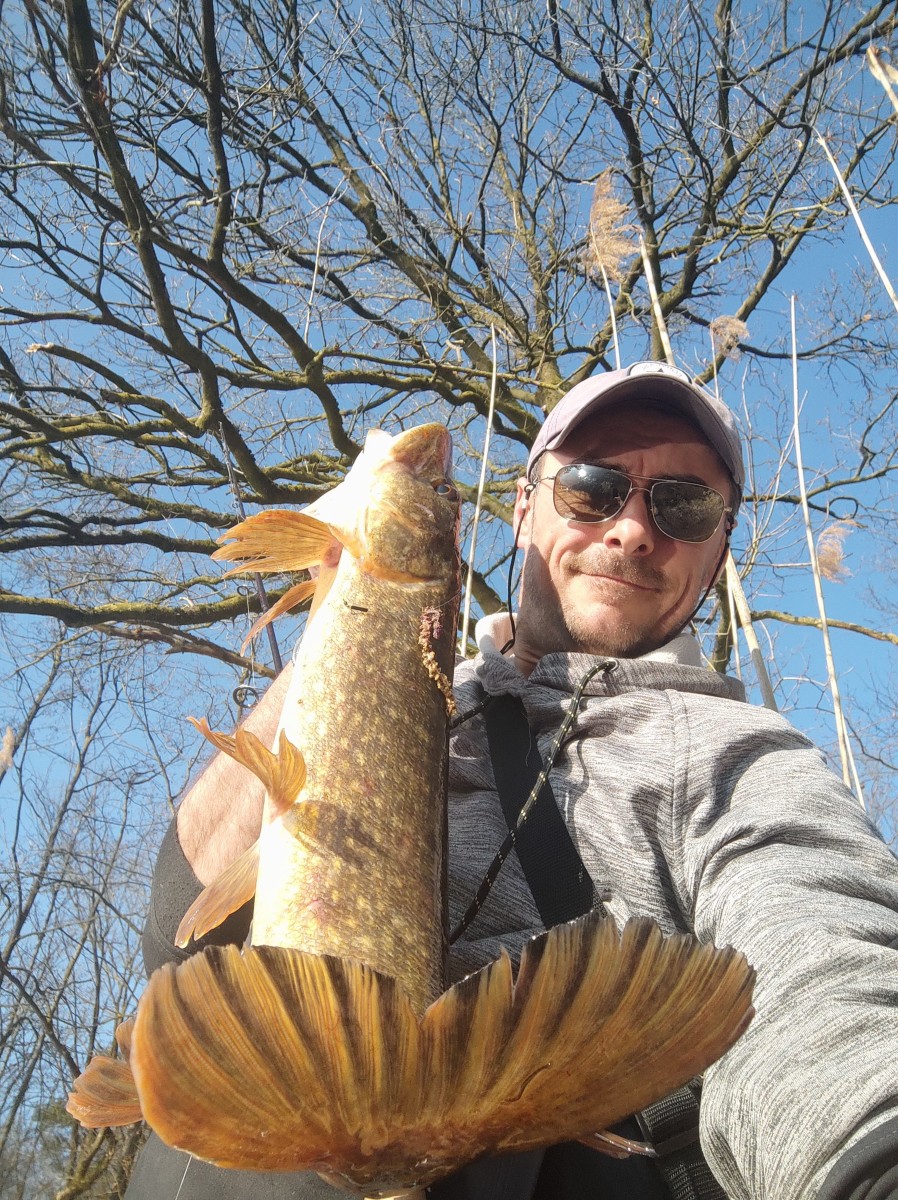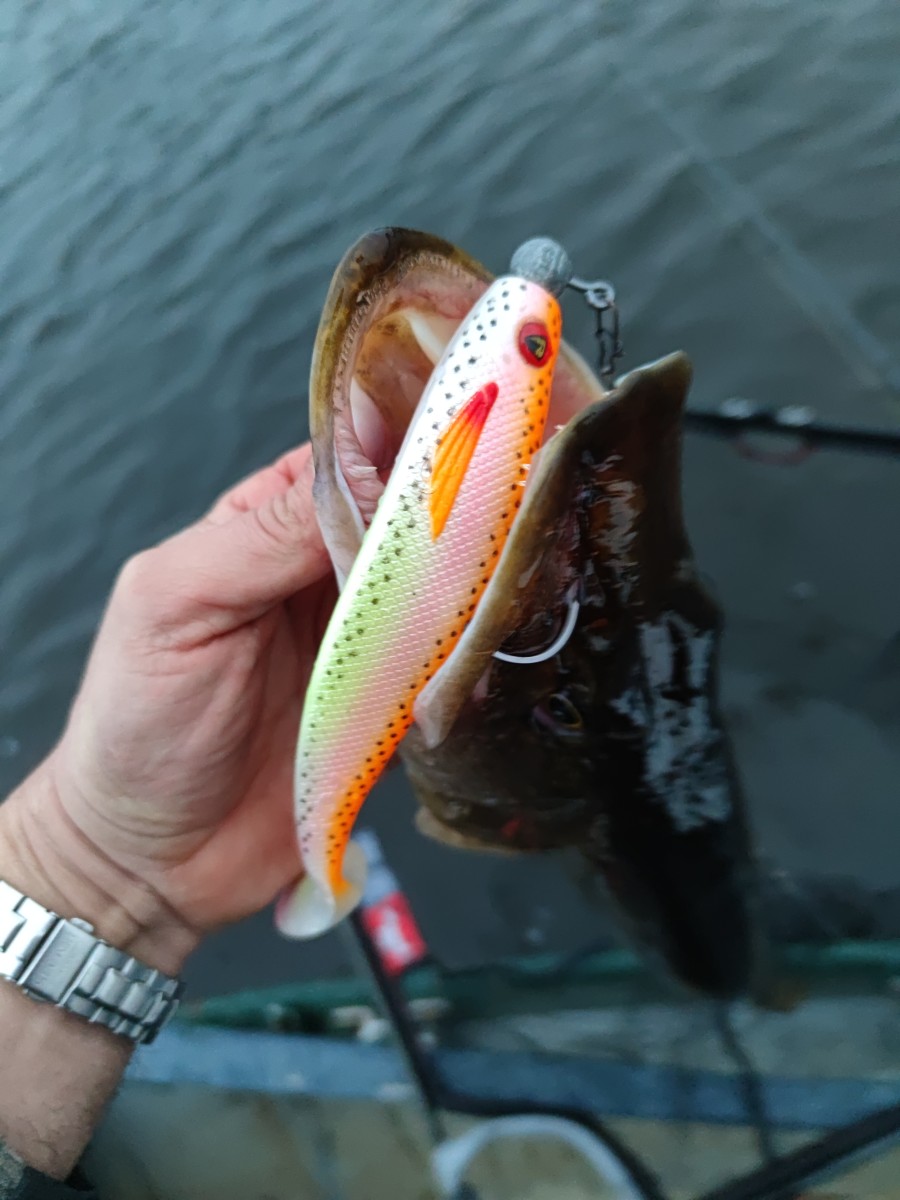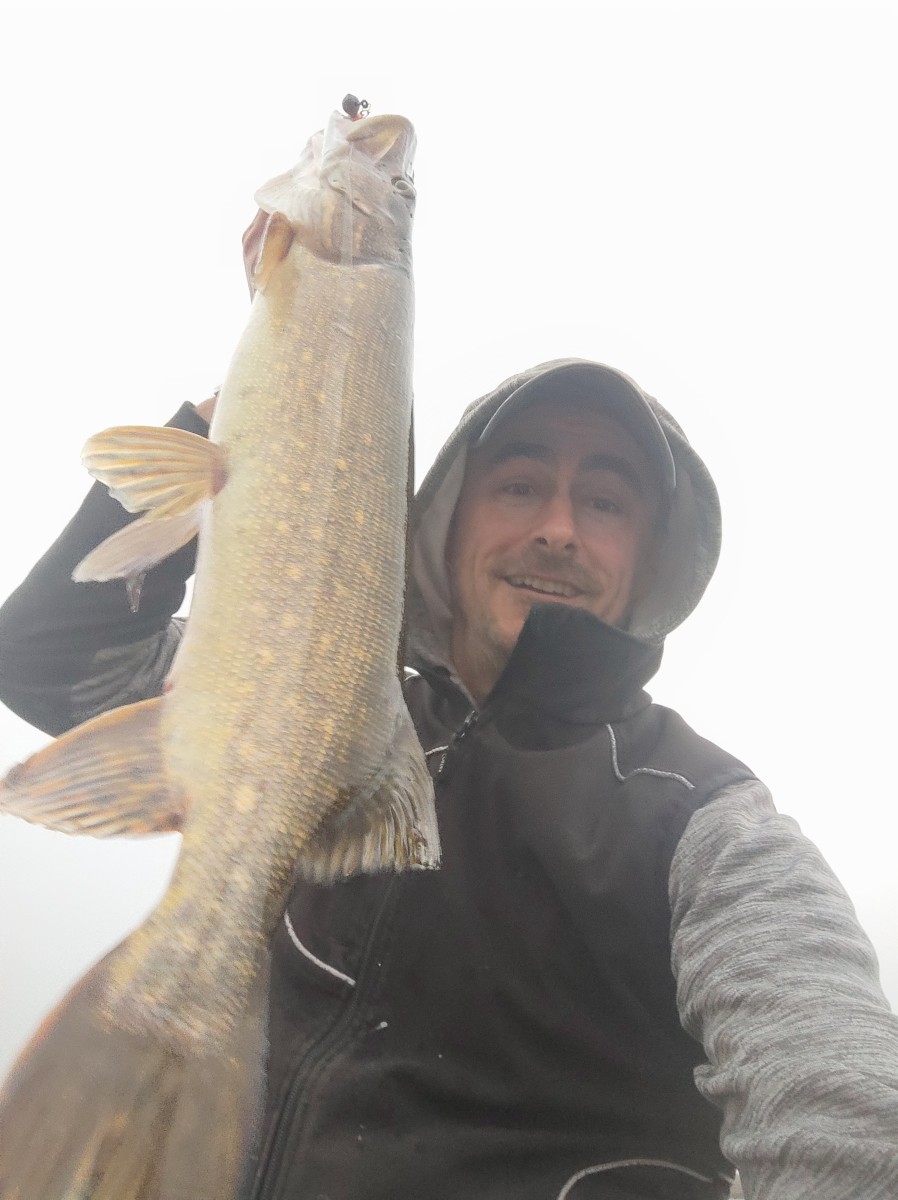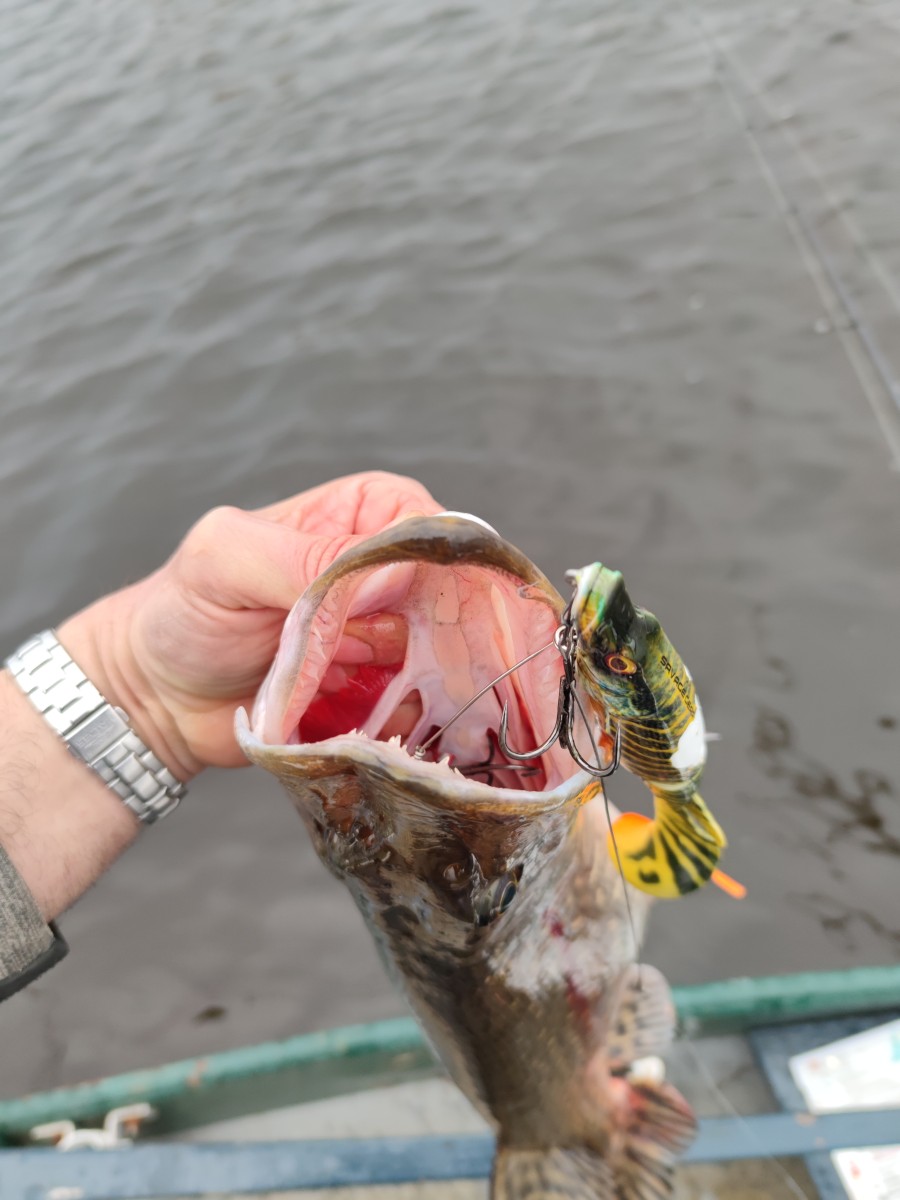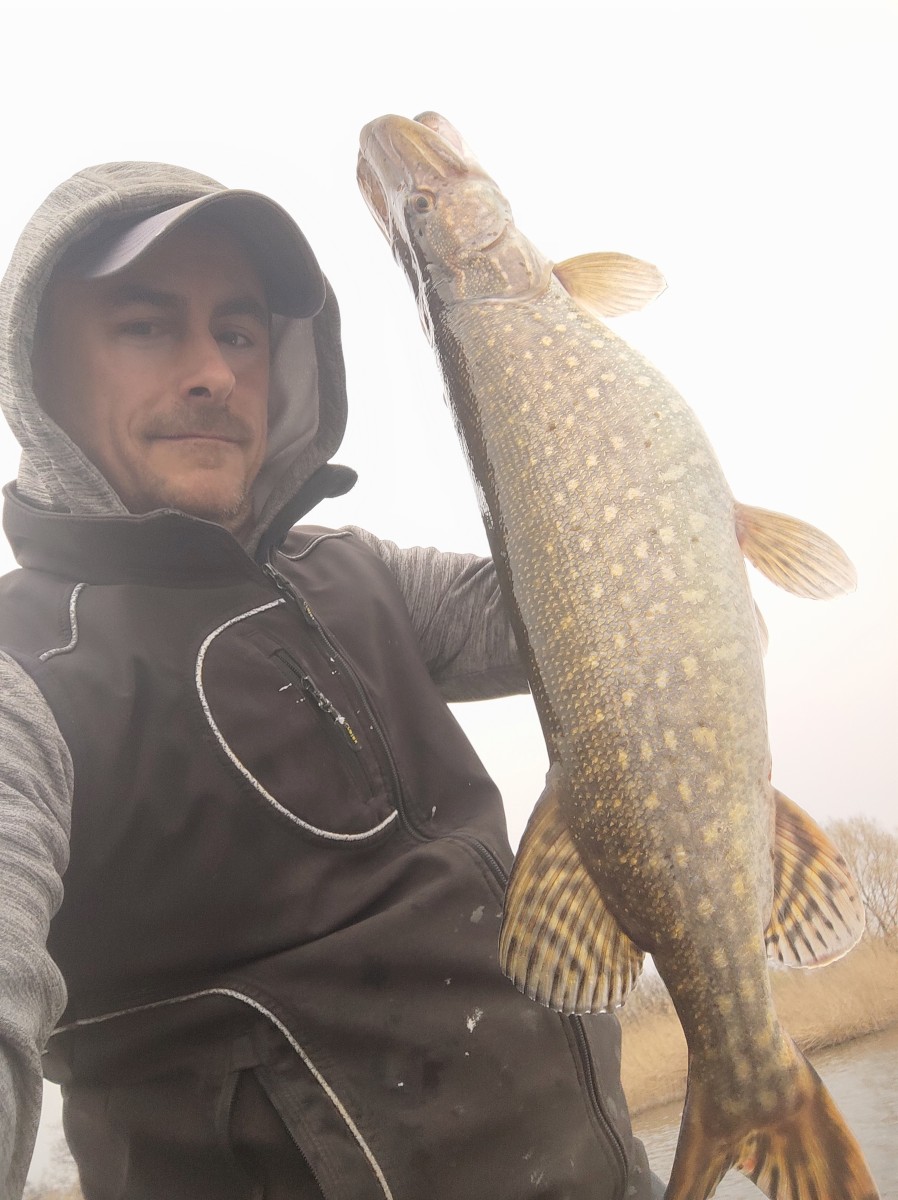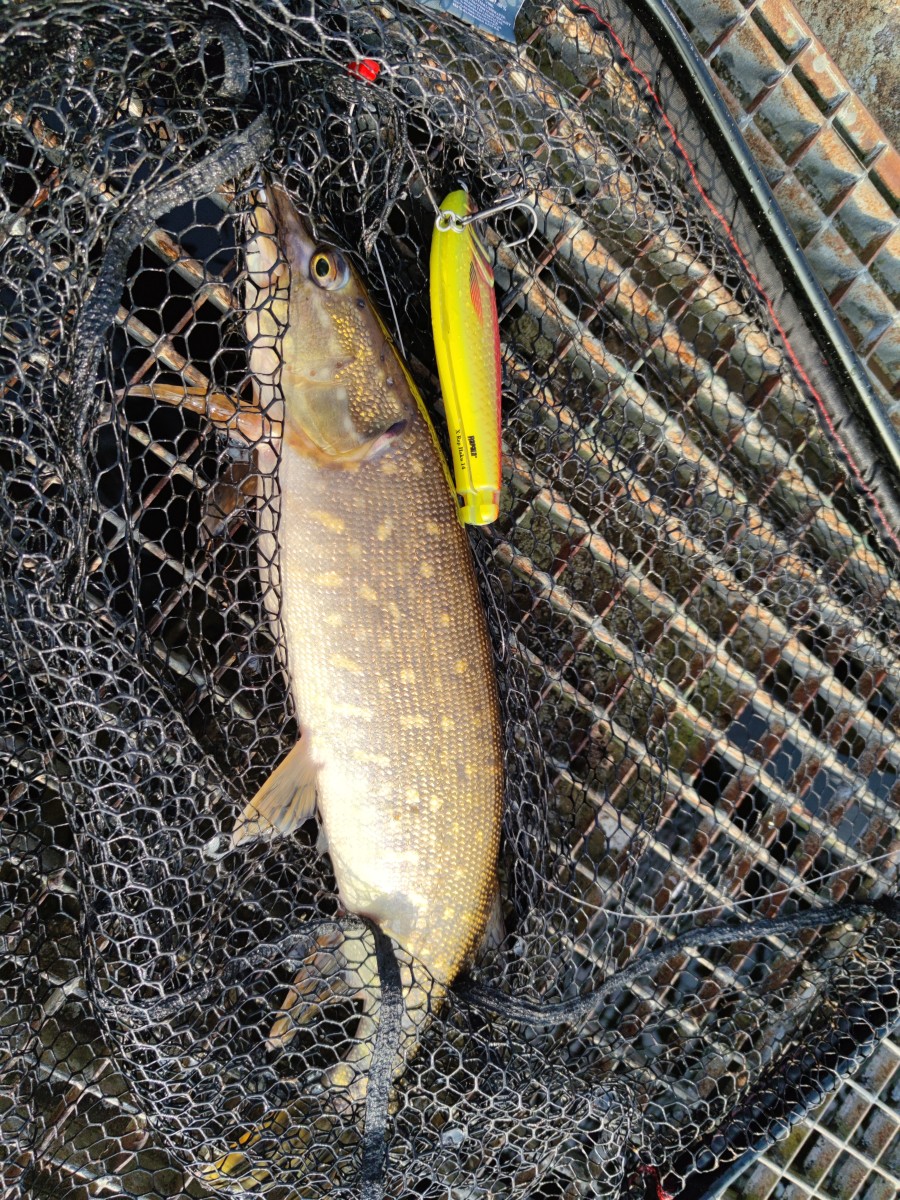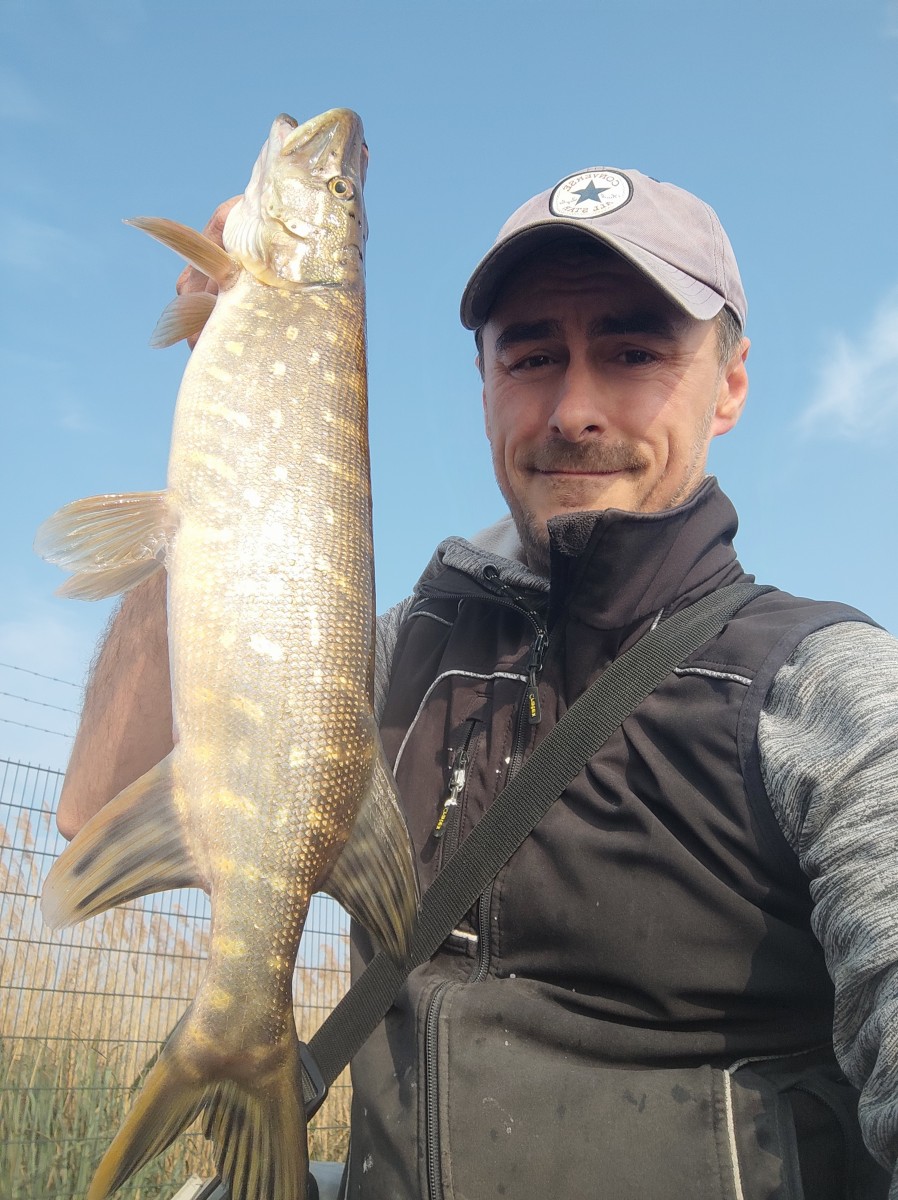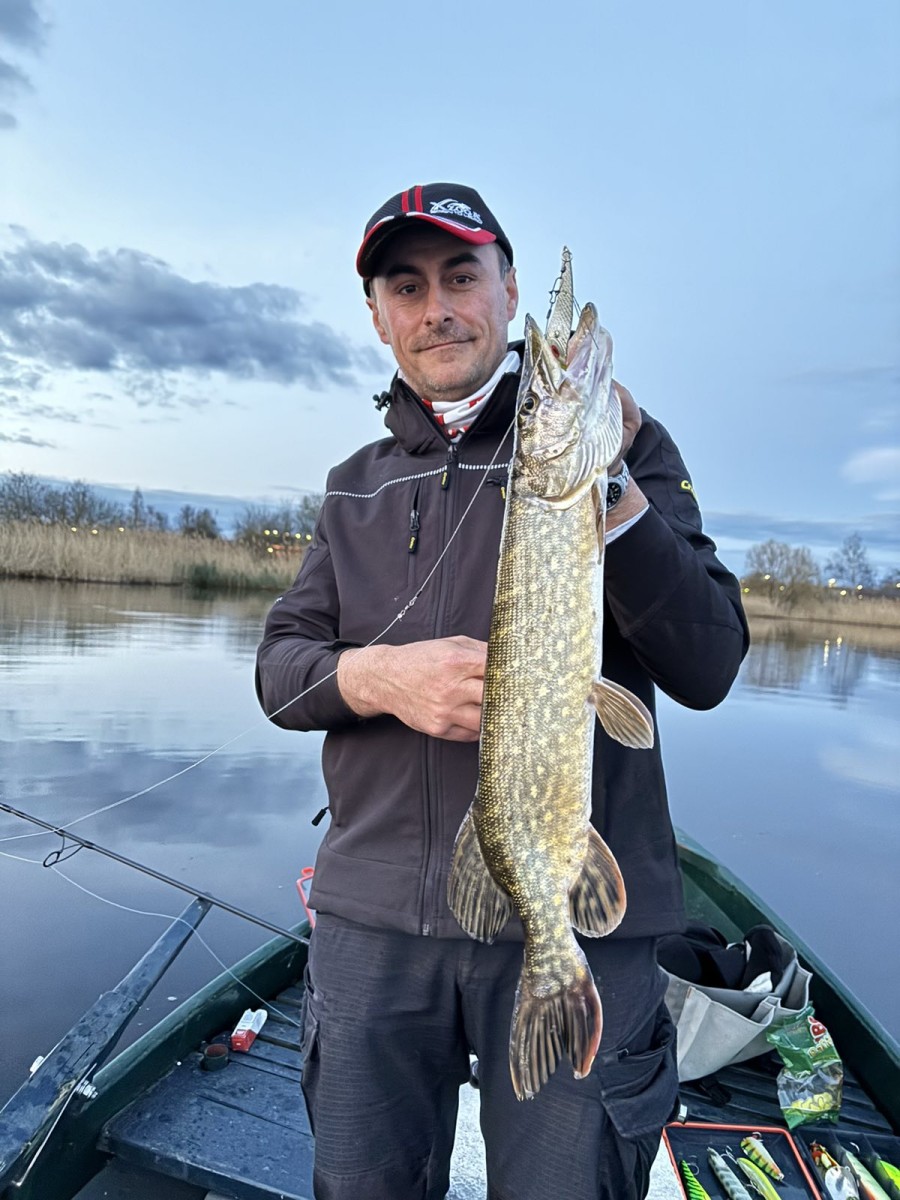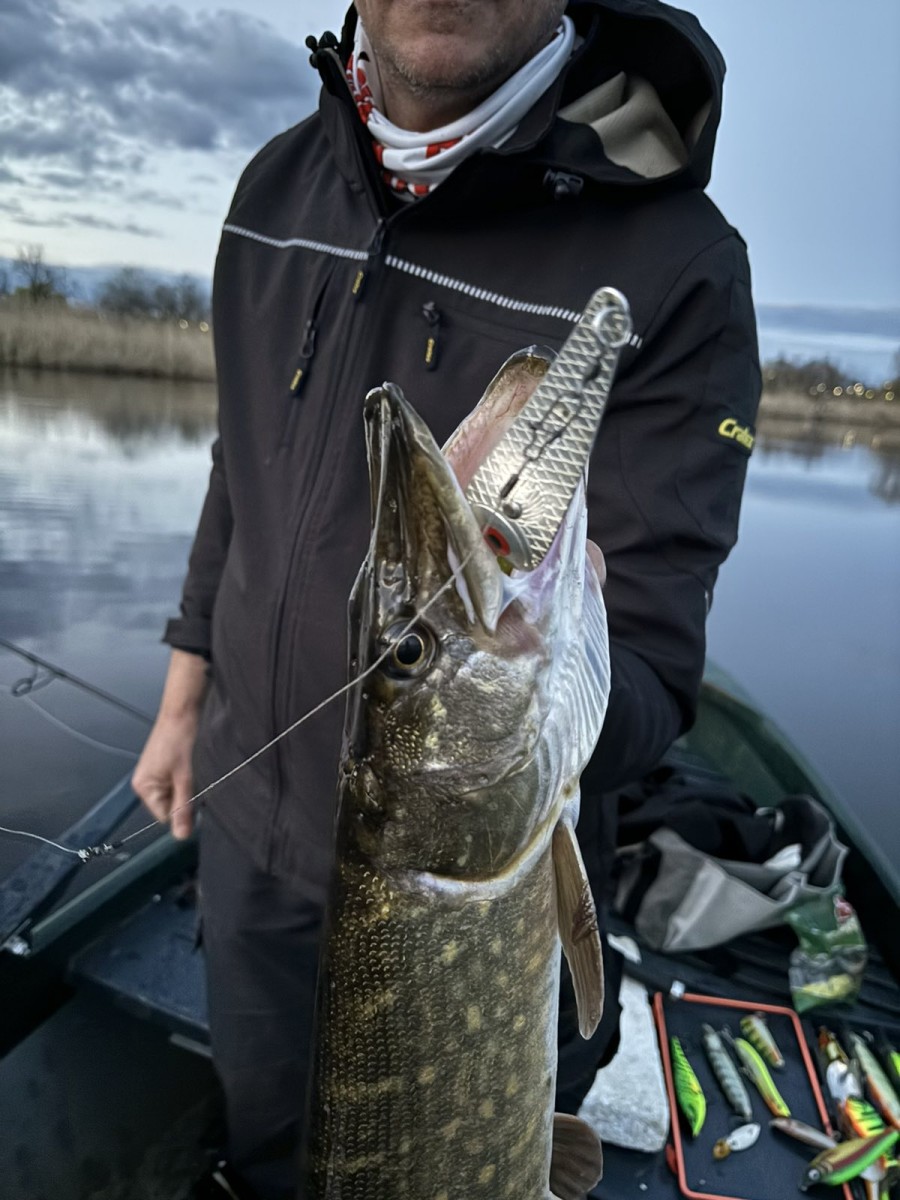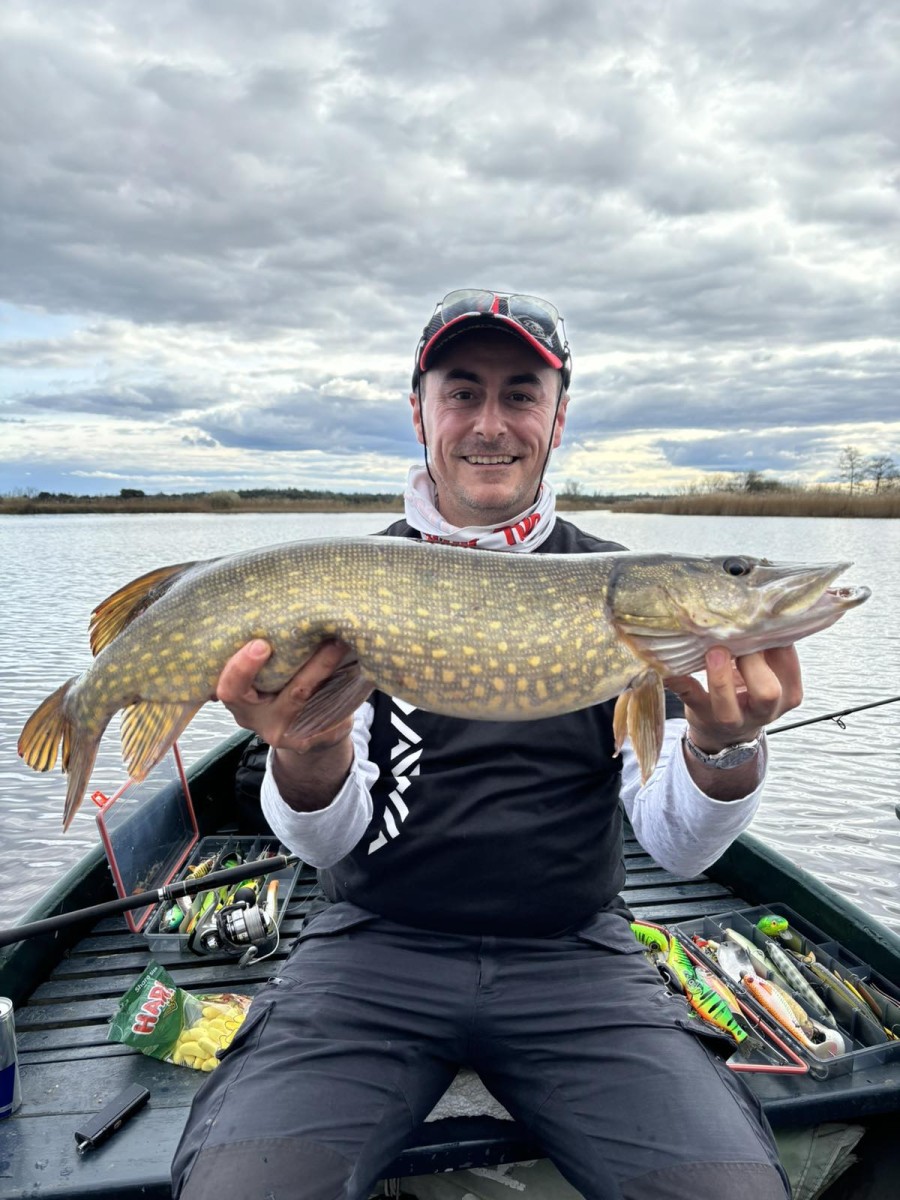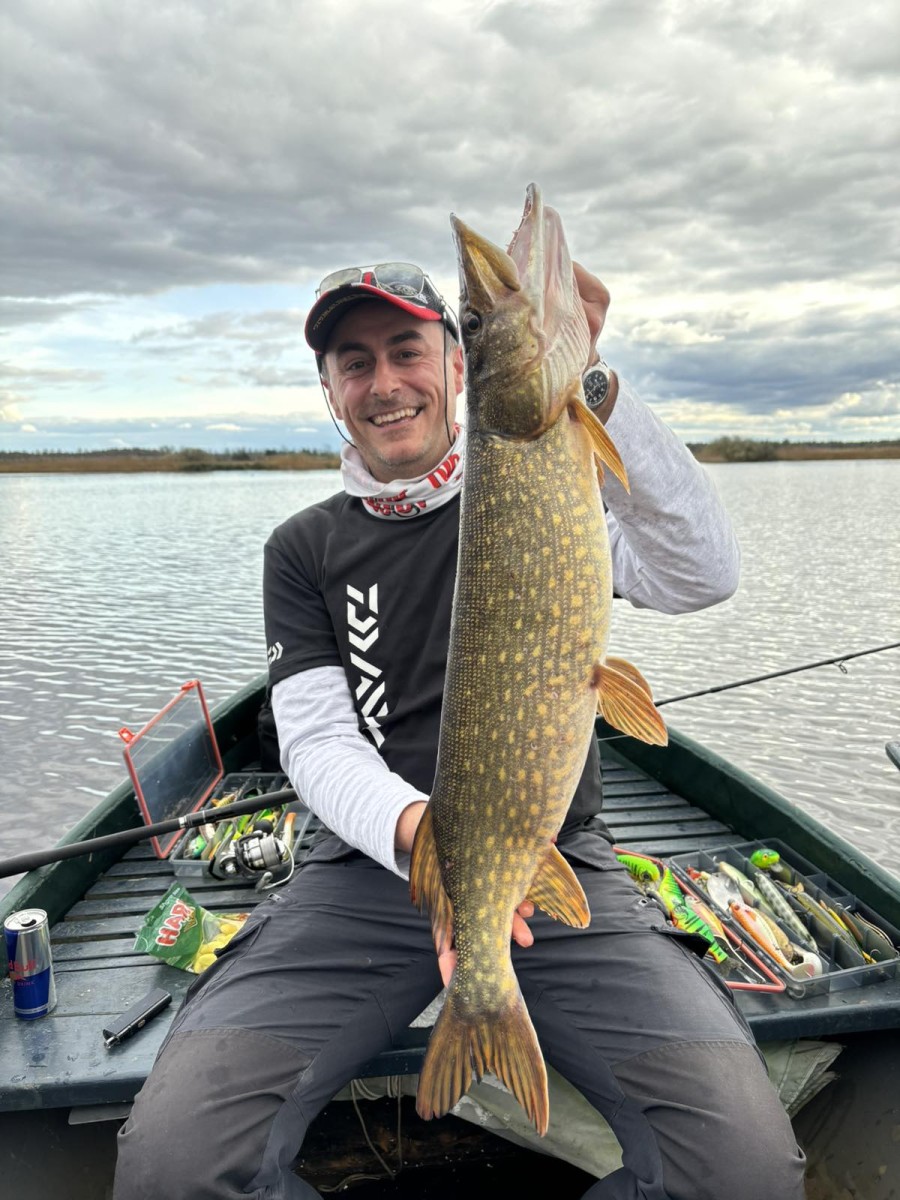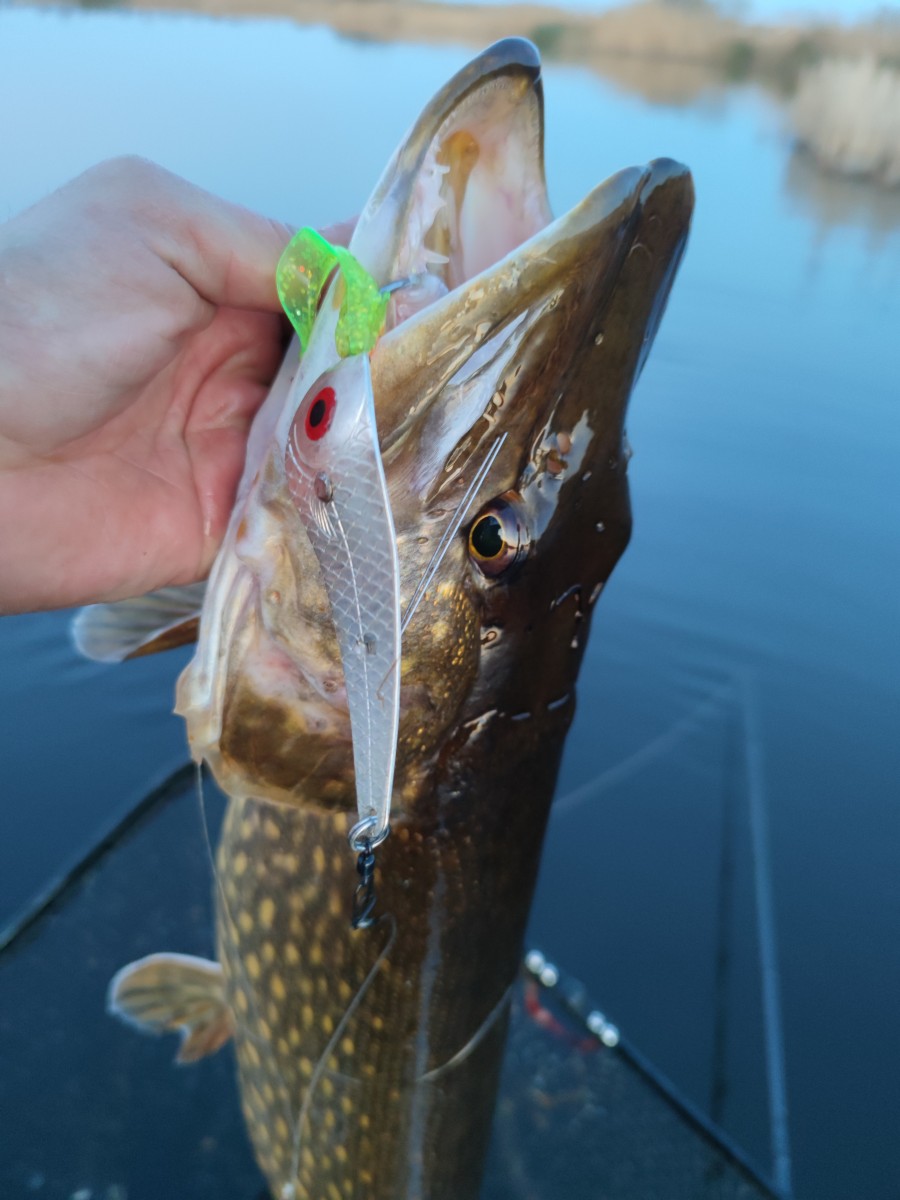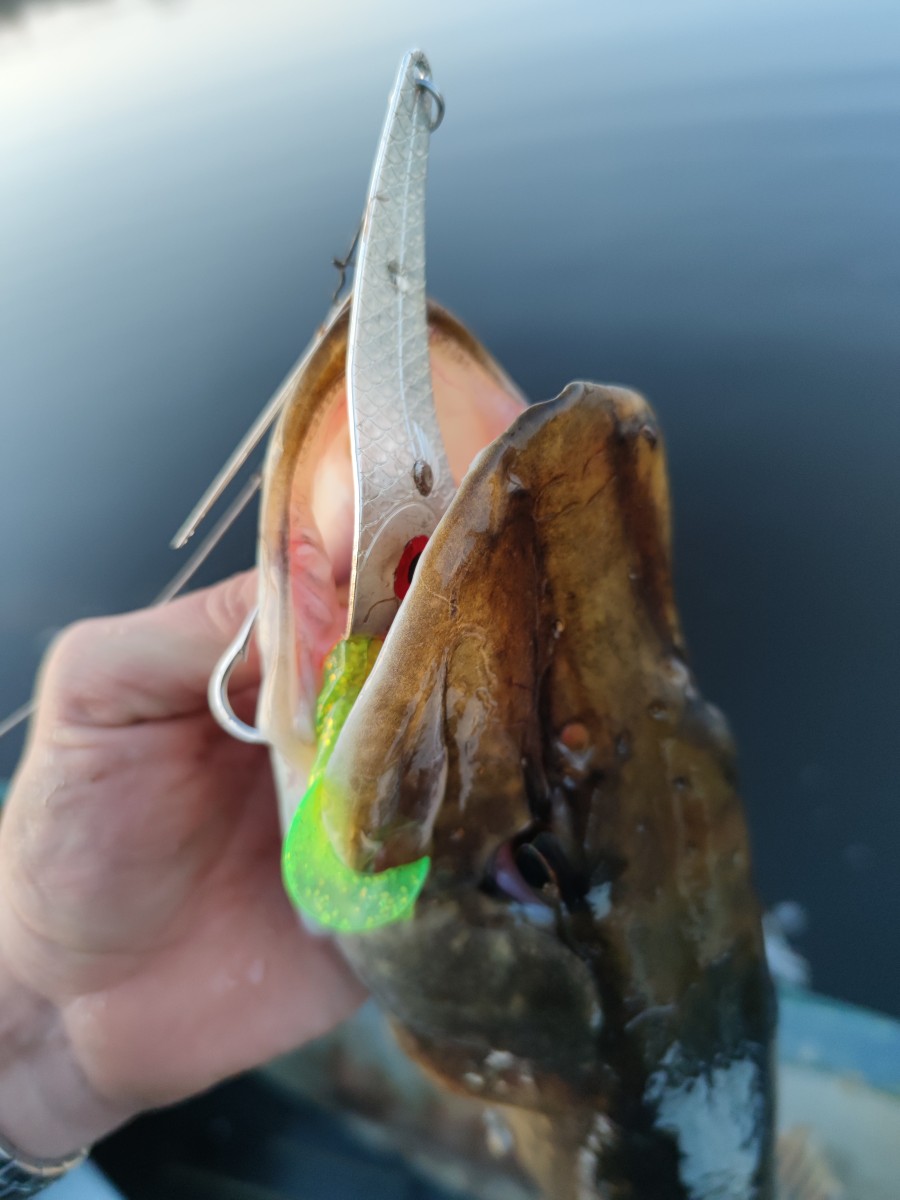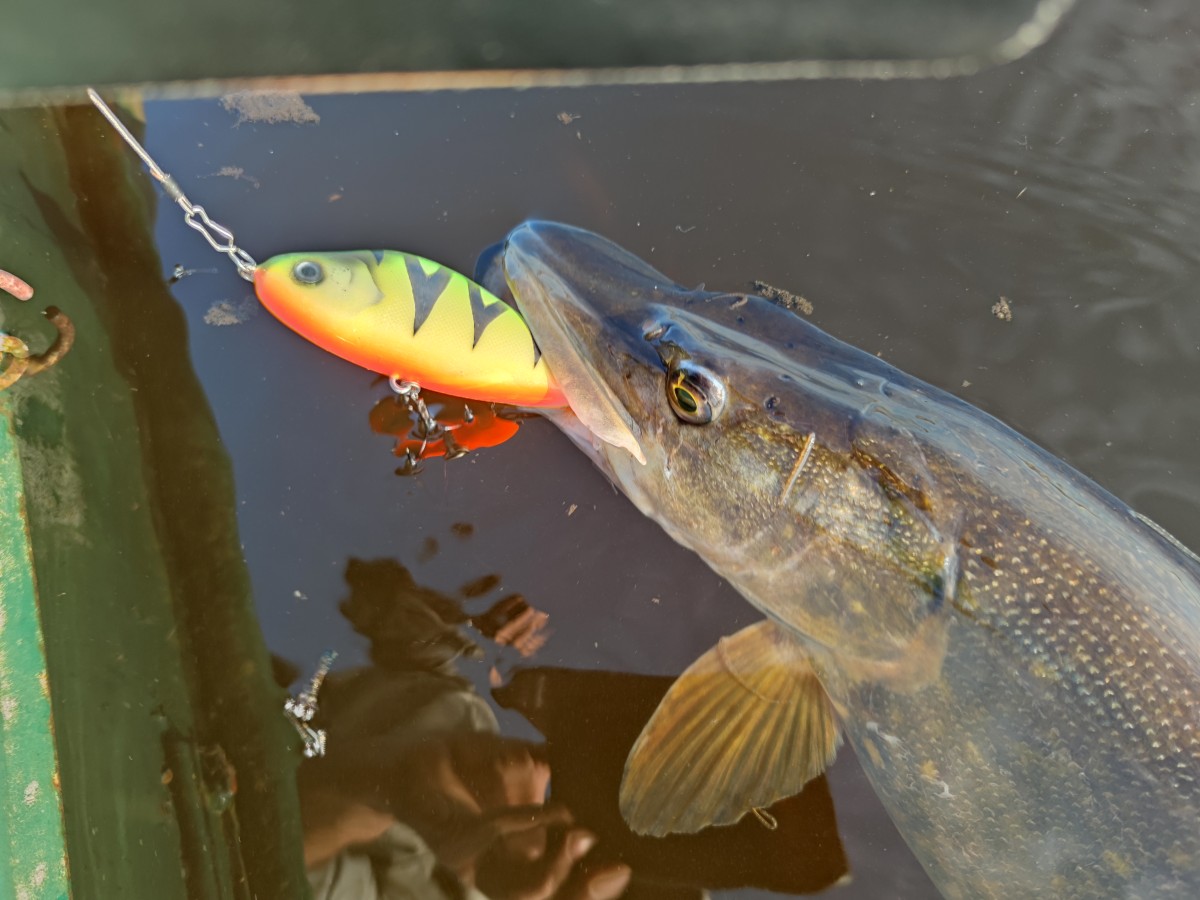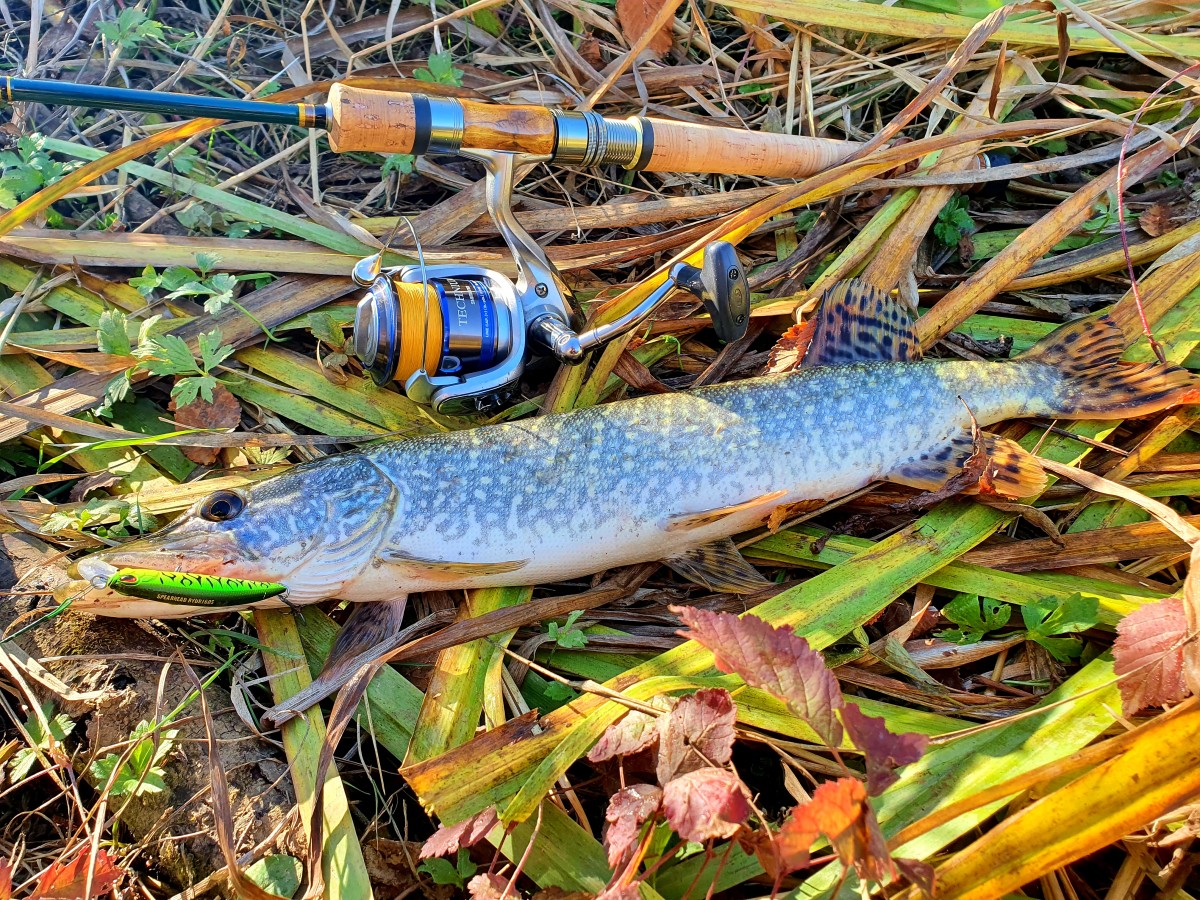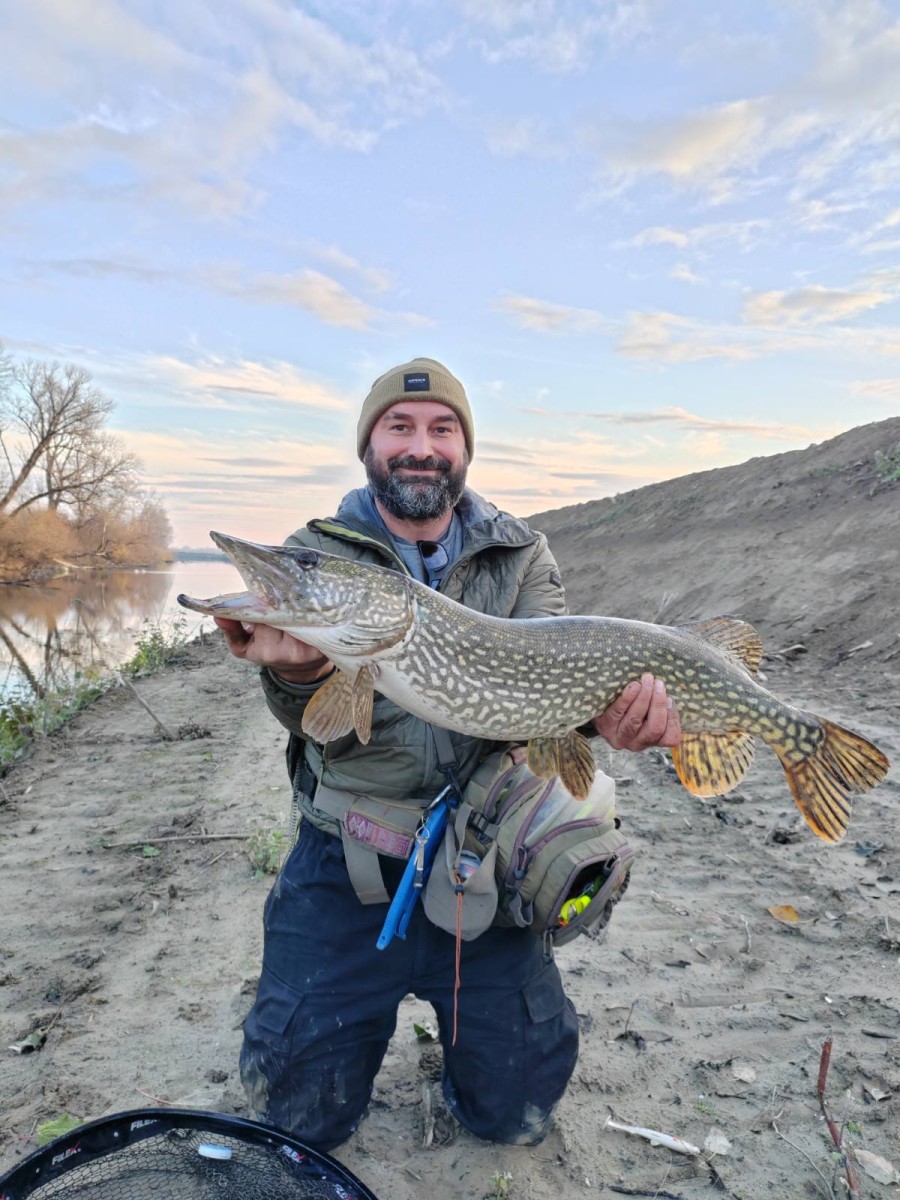Northern pike
(Esox lucius)
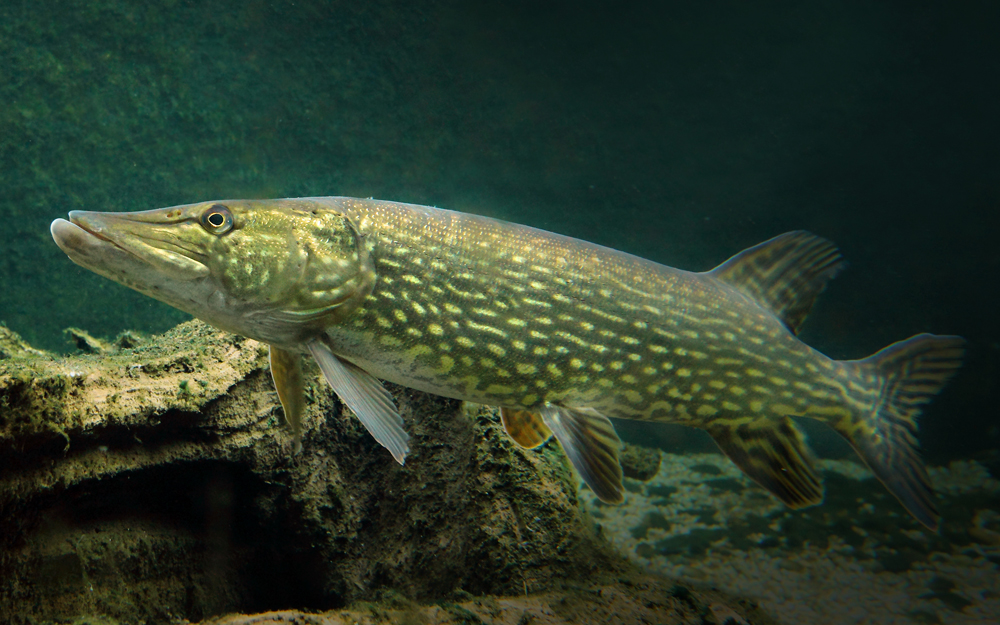
Classification
General data
The northern pike (Esox lucius) is a species of carnivorous fish of the genus Esox (the pikes). They are typical of brackish and fresh waters of the Northern Hemisphere. They are known simply as a pike in Britain, Ireland, and most of Eastern Europe, Canada and the United States.
Pike can grow to a relatively large size: the average length is about 40–55 cm (16–22 in), with maximum recorded lengths of up to 150 cm (59 in) and published weights of 28.4 kg (63 lb).
The IGFA currently recognizes a 25 kg (55 lb) pike caught by Lothar Louis on Greffern Lake, Germany, on 16 October 1986, as the all-tackle world-record northern pike.
Northern pike are most often olive green, shading from yellow to white along the belly. The flank is marked with short, light bar-like spots and a few to many dark spots on the fins. Sometimes, the fins are reddish. Younger pike have yellow stripes along a green body; later, the stripes divide into light spots and the body turns from green to olive green.
The lower half of the gill cover lacks scales, and it has large sensory pores on its head and on the underside of its lower jaw which are part of the lateral line system. Unlike the similar-looking and closely related muskellunge, the northern pike has light markings on a dark body background and fewer than six sensory pores on the underside of each side of the lower jaw.
In Italy, the newly identified species Esox cisalpinus (Southern pike) was long thought to be a color variation of the northern pike, but was in 2011 announced to be a species of its own.
Geographic distribution
Esox lucius is found in fresh water throughout the Northern Hemisphere, including Asia, Europe, and North America. It has also been introduced to lakes in Morocco, and is even found in brackish water of the Baltic Sea, but they are confined to the low-salinity water at the surface of the sea, and are seldom seen in brackish water elsewhere.
Within North America, northern pike populations are found in Maine, New Hampshire, Vermont, Massachusetts, Rhode Island, Connecticut, New York, New Jersey, Pennsylvania, Maryland, West Virginia, Ohio, Michigan, Indiana, Illinois, Wisconsin, Minnesota, Iowa, Missouri, North Dakota, South Dakota, Nebraska, Kansas, Montana, Idaho, Utah, Colorado, Oklahoma, northern Texas, northern New Mexico, northern Arizona, Alaska, the Yukon, the Northwest Territories, Alberta, Saskatchewan, Manitoba, Ontario, and Québec (pike are rare in British Columbia and east coast provinces). Watersheds in which pike are found include the Ohio Valley, the upper Mississippi River and its tributaries, and the Great Lakes Basin. They are also stocked in, or have been introduced to, some western lakes and reservoirs for sport fishing, although some fisheries managers believe this practice often threatens other species of fish such as bass, trout, and salmon, causing government agencies to attempt to exterminate the pike by poisoning lakes, such as Stormy Lake, Alaska.
E. lucius is a severe invasive predator in Box Canyon Reservoir on the Pend Oreille River in northeastern Washington.
